Search Result
Results for "
hepatoprotective
" in MedChemExpress (MCE) Product Catalog:
6
Isotope-Labeled Compounds
| Cat. No. |
Product Name |
Target |
Research Areas |
Chemical Structure |
-
- HY-W027126
-
|
|
Apoptosis
|
Metabolic Disease
|
|
Hepatoprotective agent-2 (compound 2a), a 4-phenyl-tetrahydroquinoline derivative, displays a remarkable hepatoprotective effect. Hepatoprotective agent-2 has antiapoptotic activity. Hepatoprotective agent-2 notably prevents the chemically induced elevation of hepatic indicators associated with liver injury .
|
-
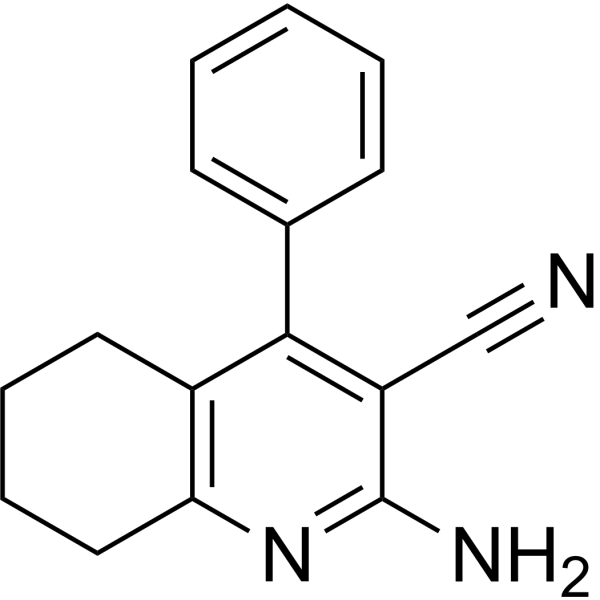
-
- HY-162137
-
|
|
Apoptosis
|
Inflammation/Immunology
|
|
Hepatoprotective agent-1 (compound 1b) is a hepatoprotective agenrt. Hepatoprotective agent-1 shows anti-inflammatory, antiapoptotic and antifibrotic effects .
|
-
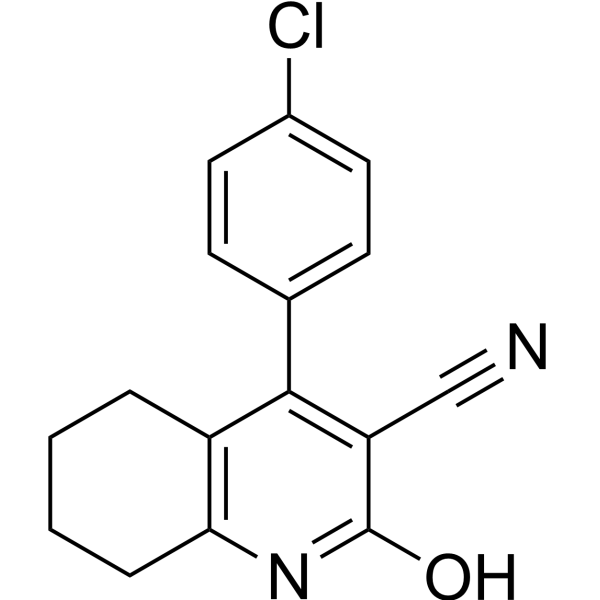
-
- HY-N11660
-
|
|
Others
|
Metabolic Disease
|
|
weak Hepatoprotective agent-1 (Compound 11) is a natural product that can be isolated from the fruits of Arctium lappa L.. weak Hepatoprotective agent-1 exhibits weak hepatoprotective activities at a concentration of 10 μM .
|
-
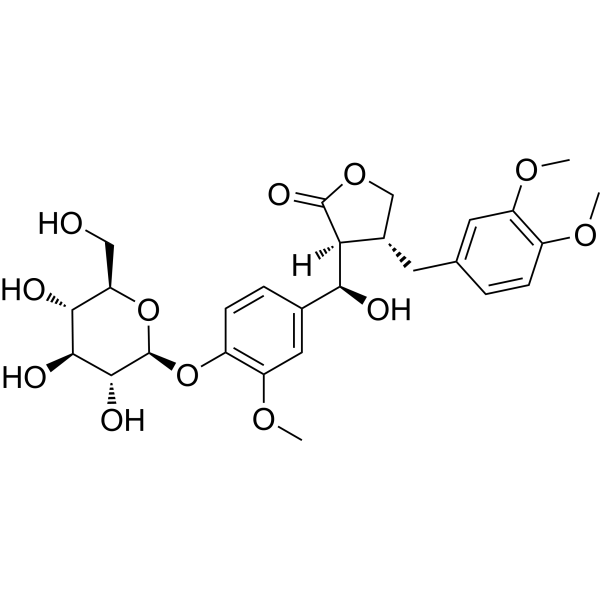
-
- HY-N11448
-
-

-
- HY-N11563
-
|
|
Others
|
Others
|
|
Potentillanoside A is a natural compound with hepatoprotective effect .
|
-

-
- HY-114974
-
-
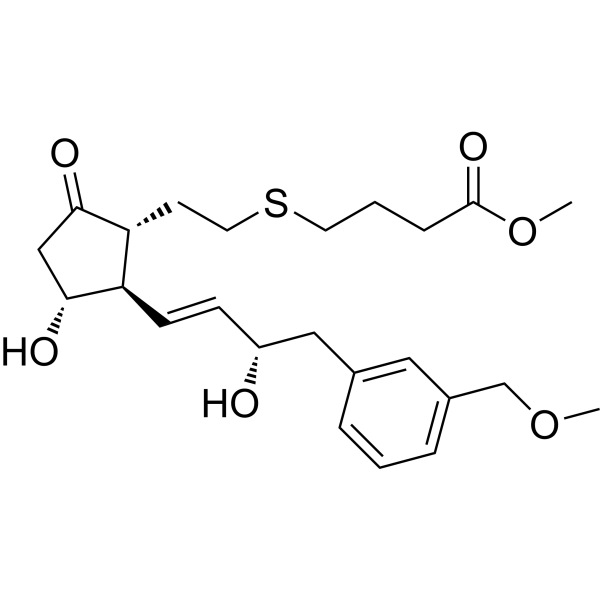
-
- HY-N5092
-
|
|
Others
|
Metabolic Disease
|
|
7-Methylcoumarin, a coumarin, exhibits strong hepatoprotective activity and potent antioxidant effect .
|
-
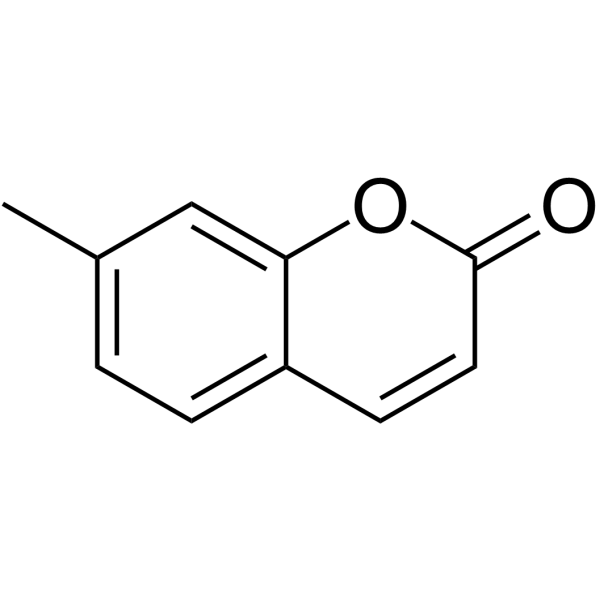
-
- HY-N2412
-
|
|
Chloride Channel
|
Neurological Disease
Cancer
|
|
Irisolidone is a major isoflavone found in Pueraria lobata flowers. Irisolidone exhibits potent hepatoprotective activity. Irisolidone shows the high efficacy for volume-regulated anion channels (VRAC) blockade (IC50=9.8 μM) .
|
-
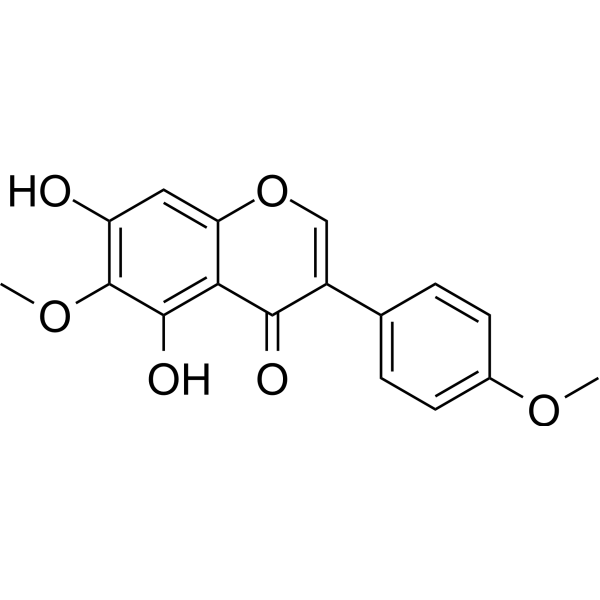
-
- HY-N0975
-
|
|
Others
|
Metabolic Disease
|
|
1,11b-Dihydro-11b-hydroxymaackiain, a pterocarpane extract from the stems of Erycibe expansa, show a hepatoprotective effect .
|
-

-
- HY-N4107
-
|
|
Others
|
Metabolic Disease
|
|
Phyllanthin is a major bioactive lignan component of Phyllanthus amarus. Phyllanthin exhibits high antioxidative and hepatoprotective properties .
|
-
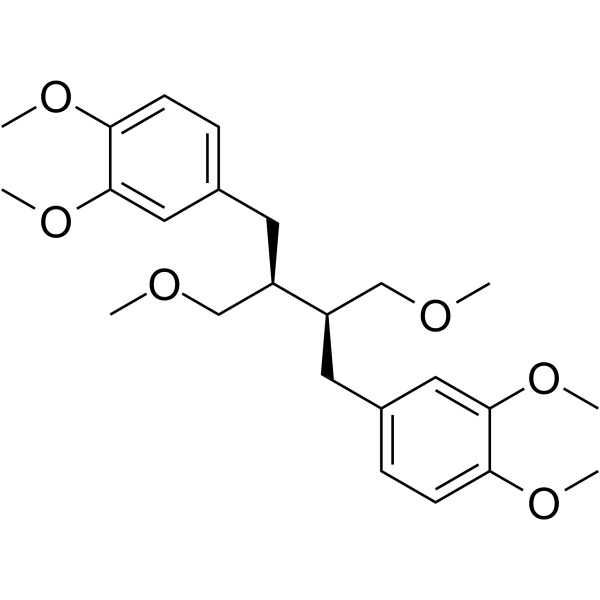
-
- HY-115363
-
|
|
Others
|
Cardiovascular Disease
Metabolic Disease
|
|
Curcumenone is a major constituent of the plants of medicinally important genus of Curcuma. Curcumenone, a caraborane type sesquiterpene has been reported to be a vasorelaxant, hepatoprotective and an effective inhibitor of intoxication .
|
-
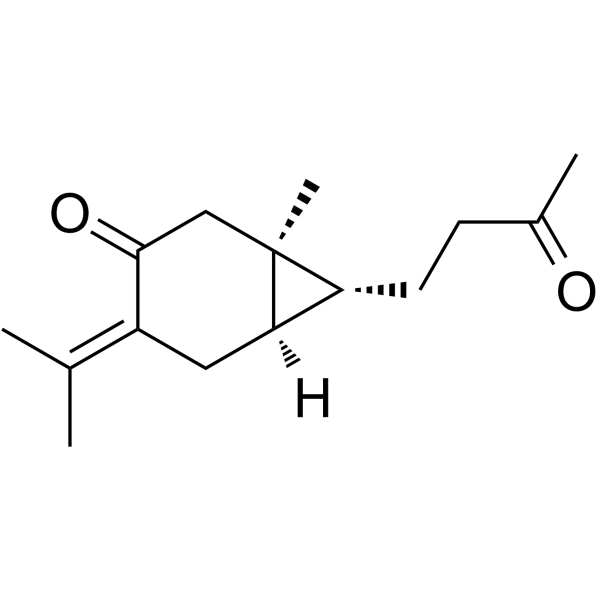
-
- HY-106947
-
|
|
Endogenous Metabolite
|
Metabolic Disease
|
|
SY-640 is an Acetamide derivative and has potent hepatoprotective effect. SY-640 reduces Propionibacterium acnes and Lipopolysaccharide-induced liver injury in mice .
|
-
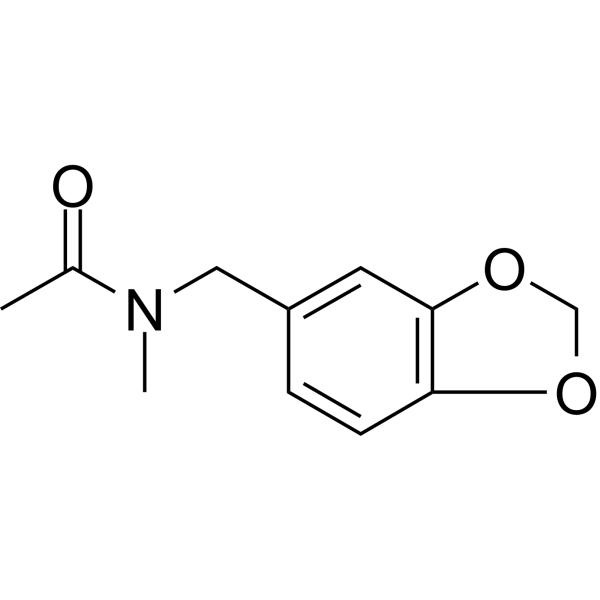
-
- HY-N10436
-
-

-
- HY-N10434
-
-
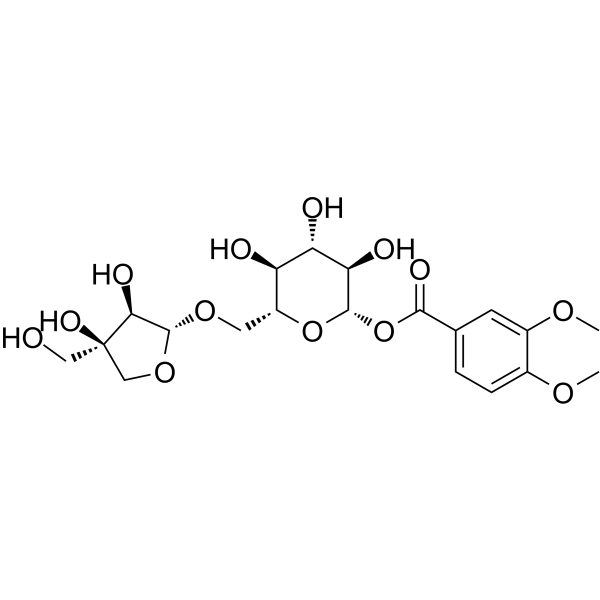
-
- HY-N10435
-
-
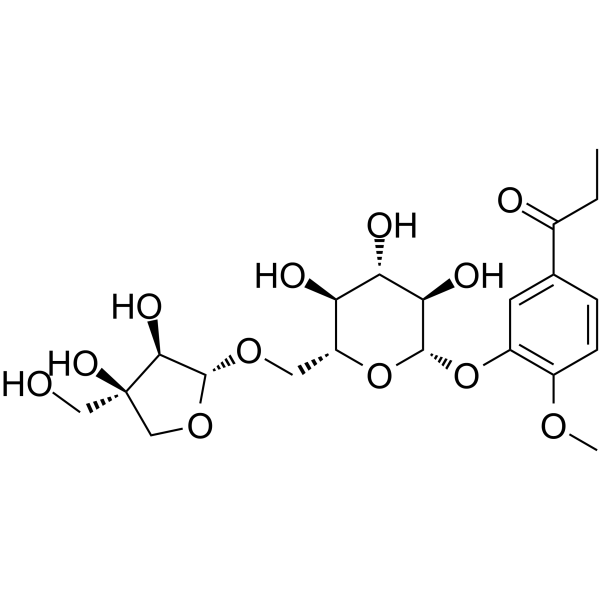
-
- HY-N10380
-
|
|
Others
|
Metabolic Disease
|
|
Inonotusol F is a triterpene isolated from Inonotus obliquus. Inonotusol F shows hepatoprotective effects against D-galactosamine-induced WB-F344 cell damage .
|
-
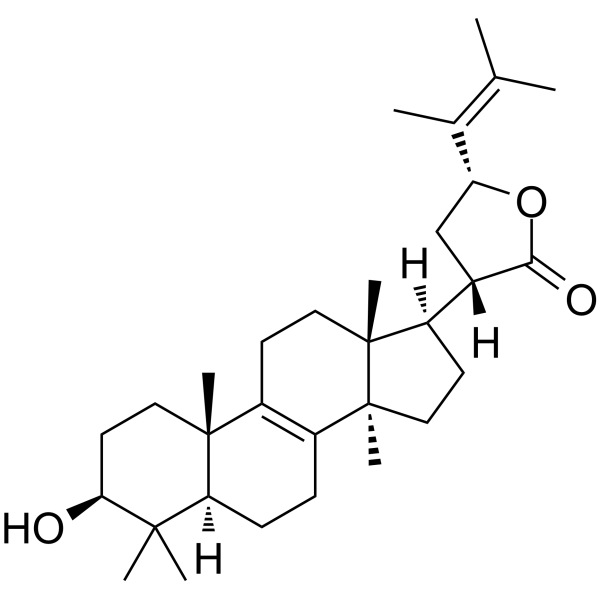
-
- HY-N7543
-
|
|
HIV
|
Infection
|
|
Schisantherin D is a dibenzocyclooctadiene lignan isolated from the fruit of Schisandra sphenanthera. Schisantherin D shows anti-HIV replication activities with an EC50 of 0.5 μg/mL. Schisantherin D inhibits endothelin receptor B (ETBR) and has hepatoprotective effects .
|
-
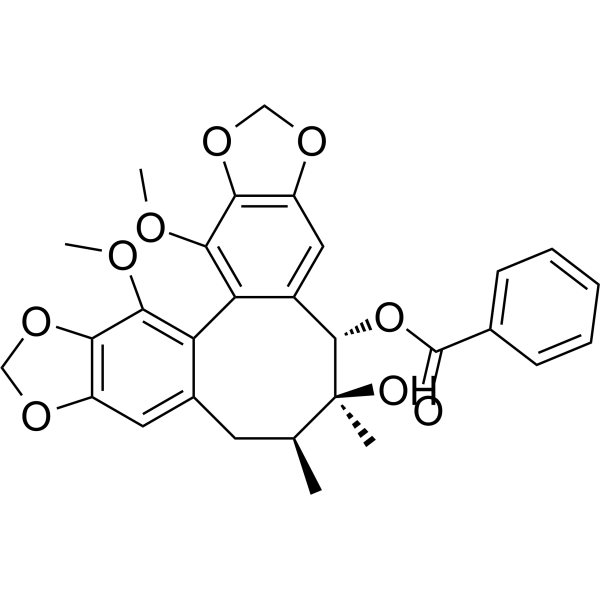
-
- HY-N5083
-
|
|
Others
|
Inflammation/Immunology
|
|
Saponarin is a natural flavonoid isolated from Gypsophila trichotoma, with antioxidant, anti-inflammatory and hepatoprotective activities. Saponarin activates AMPK in a calcium-dependent manner, thus regulating gluconeogenesis and glucose uptake .
|
-

-
- HY-125129
-
|
|
Keap1-Nrf2
|
Others
|
|
Carlinoside is a flavone glycoside with hepatoprotective efficiency. Carlinoside reduces hepatic bilirubin accumulation by stimulating bilirubin-UGT activity through Nrf2 gene expression. Carlinoside has the potential to intervene hyperbilirubinemia due to liver dysfunction .
|
-

-
- HY-N1521
-
|
Lantadene A
|
Others
|
Inflammation/Immunology
|
|
Rehmannic acid (lantadene A) is a compound isolated from Lantana camara. Rehmannic acid shows considerable in vitro antioxidant, free radical scavenging capacity activities in a dose dependant manner. Rehmannic acid is a promising candidate for use as an antioxidant and hepatoprotective agent .
|
-
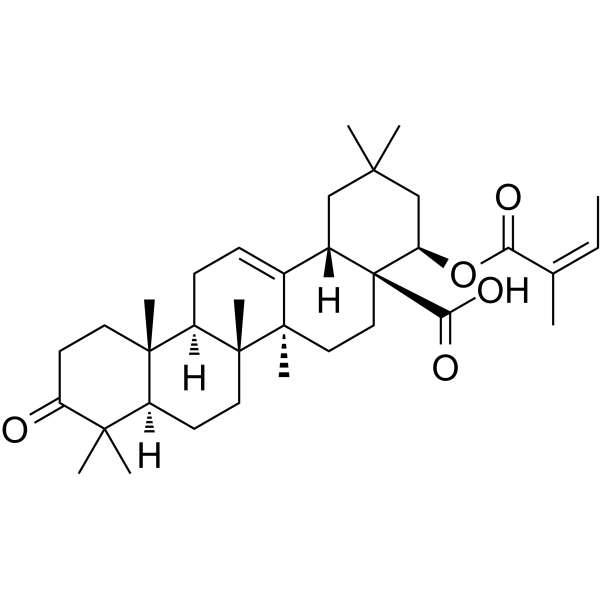
-
- HY-N12072
-
|
|
Others
|
Others
|
|
3'-Methoxy-3,5,4'-trihydroxyflavone-7-neohesperidoside is a flavonoid that can be isolated from Cleome droserifolia. 3'-Methoxy-3,5,4'-trihydroxyflavone-7-neohesperidoside has moderate hepatoprotective activity ..
|
-
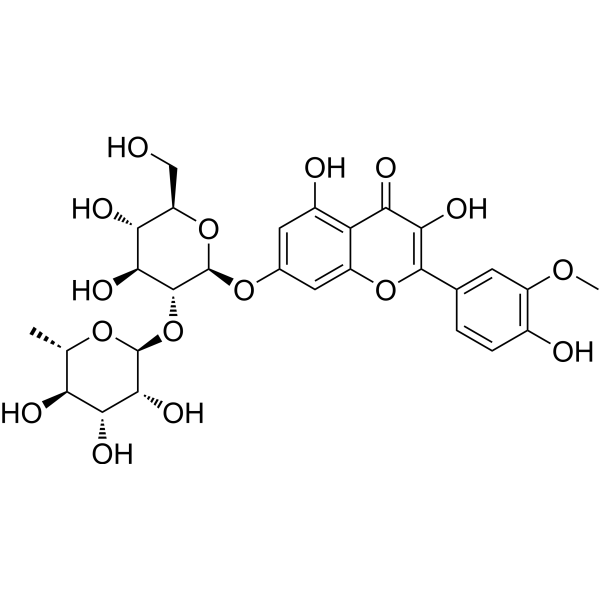
-
- HY-145888
-
|
|
Amyloid-β
|
Neurological Disease
|
|
Antioxidant agent-2 (comp 3c), an BBB-penetrated antioxidant agent and a selective metal ions chelator, presents good neuroprotective effect and hepatoprotective effect for the study of Alzheimer’s disease .
|
-
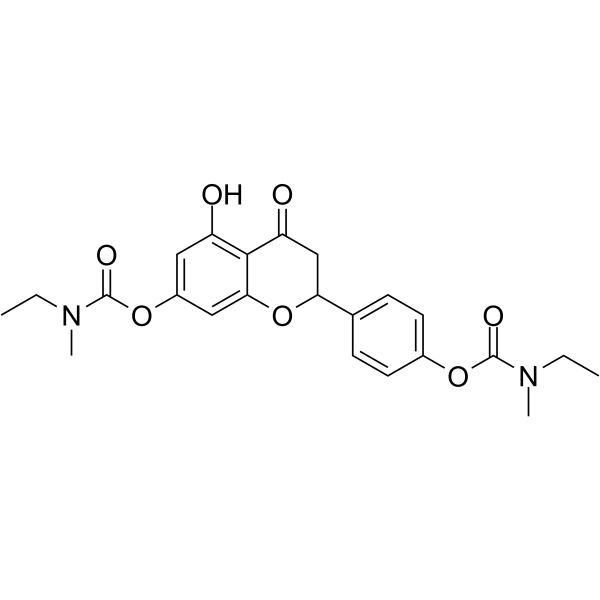
-
- HY-N1214S
-
|
Super Squalene-d6; trans-Squalene-d6; AddaVax-d6
|
Isotope-Labeled Compounds
|
Others
|
|
Squalene-d6 is a deuterium labeled Squalene. Squalene (Super Squalene) is an intermediate product in the synthesis of cholesterol, and shows several pharmacological properties such as hypolipidemic, hepatoprotective, antiatherosclerotic, cardioprotective, antioxidant, and antitumour activity .
|
-

-
- HY-N4113
-
|
|
Keap1-Nrf2
AMPK
|
Cancer
|
|
Glycycoumarin is a potent antispasmodic agent. Glycycoumarin is a major bioactive coumarin of licorice and exhibits antispasmodic activity. Glycycoumarin also has hepatoprotective effect. Glycycoumarin can be used for the research of abdominal pain and liver diseases .
|
-
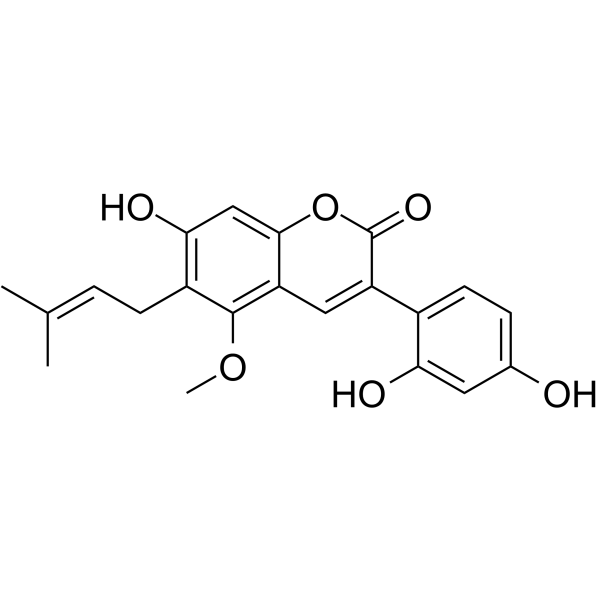
-
- HY-146058
-
|
|
NF-κB
Reactive Oxygen Species
|
Cancer
|
|
NF-κB/PON1-IN-1 (Compound 16) is a NF-κB/PON1 pathway inhibitor. NF-κB/PON1-IN-1 has antioxidant (IC50 = 45.76 µM) and hepatoprotective activities .
|
-

-
- HY-139637
-
|
Silibinin (mixture of Silybin A and Silybin B)
|
Others
|
Cancer
|
|
(±)-Silybin is the racemate of Silybin (HY-N0779A). Silybin induces apoptosis and exhibits hepatoprotective, antioxidant, anti-inflammatory, anti-cancer activity .
|
-

-
- HY-N0779A
-
Silybin
2 Publications Verification
Silibinin
|
Apoptosis
|
Inflammation/Immunology
Cancer
|
|
Silybin is a flavonolignan isolated from milk thistle (Silybum marianum) seeds. Silybin induces apoptosis and exhibits hepatoprotective, antioxidant, anti-inflammatory, anti-cancer activity .
|
-
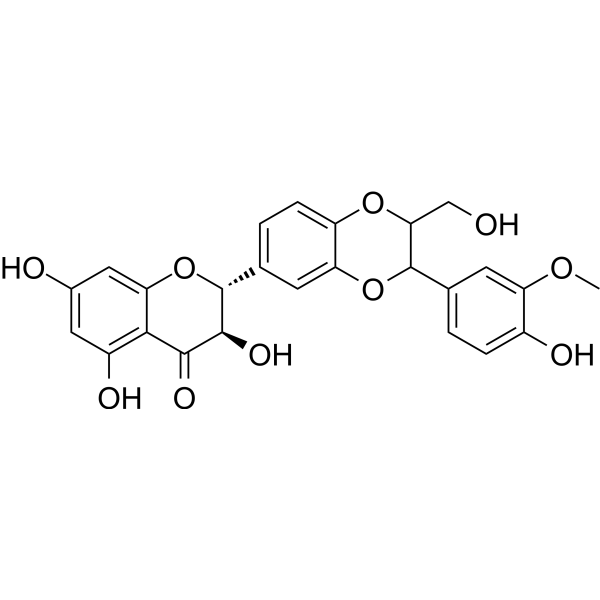
-
- HY-N4043
-
|
Hirsutanonol 5-O-glucoside
|
Others
|
Cancer
|
|
Hirsutanonol 5-O-glucoside is a diarylheptanoid derivatives that can be isolated from Alnus hirsuta. Hirsutanonol 5-O-glucoside exhibits significant hepatoprotective effects against t-BHP-induced toxicity in HepG2 cells with 42.8% protection .
|
-

-
- HY-114360
-
|
|
Endogenous Metabolite
|
Metabolic Disease
|
|
Taurohyodeoxycholic acid is the tauroconjugated form of Hyodeoxycholic acid (HDCA, a dihydroxylated natural bile acid). Taurohyodeoxycholic acid induces a biliary phospholipid secretion and suggests a hepatoprotective potential. Taurohyodeoxycholic acid also can promote gallstone dissolution .
|
-
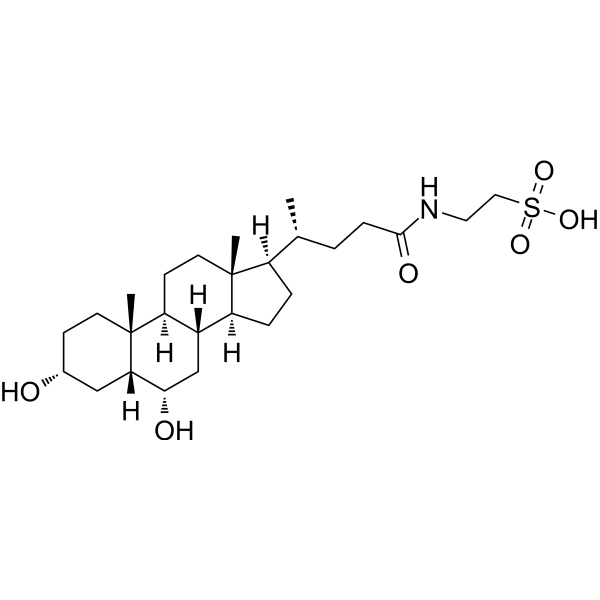
-
- HY-N4037
-
|
(-)-Homopterocarpin; 3,9-Dimethoxypterocarpan
|
Monoamine Oxidase
|
Inflammation/Immunology
|
|
Homopterocarpin is an isoflavonoid that can be isolated from Pterocarpus erinaceus. Homopterocarpin has hepatoprotective and antioxidant properties. Homopterocarpin is a competitive reversible inhibitor of human monoamine oxidase-B with an IC50 and a Ki of 0.72 and 0.21 μM for hMAO-B, respectively. Homopterocarpin can be used for the research of liver injury and oxidative stress .
|
-
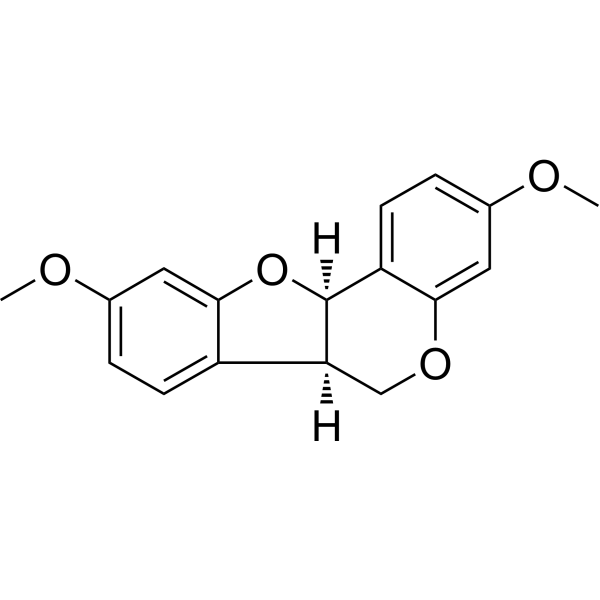
-
- HY-N0691
-
|
Schizandrin; Schizandrol; Schizandrol-A
|
Autophagy
|
Inflammation/Immunology
Cancer
|
|
Schisandrin (Schizandrin), a dibenzocyclooctadiene lignan, is isolated from the fruit of Schisandra chinensis Baill. Schisandrin exhibits antioxidant, hepatoprotective, anti-cancer and anti-inflammatory activities. Schisandrin also can reverses memory impairment in rats .
|
-
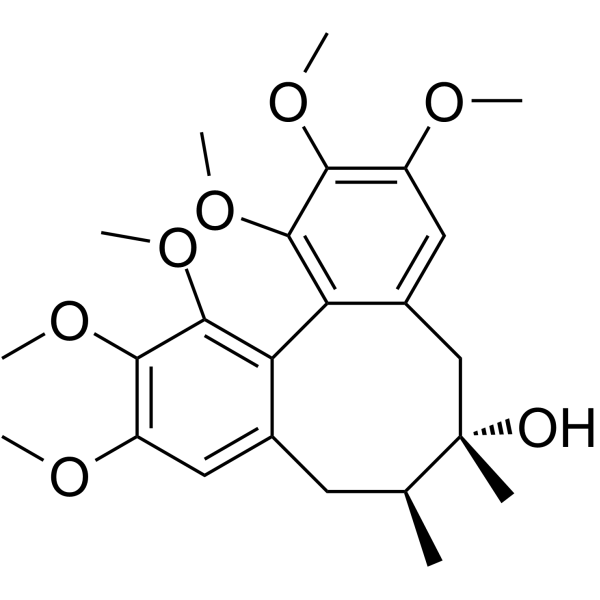
-
- HY-N1506
-
|
|
Others
|
Cancer
|
|
Ganodermanontriol, a sterol isolated from Ganoderma lucidum, induces anti-inflammatory activity in tert-butyl hydroperoxide (t-BHP)-damaged hepatic cells through the expression of HO-1. Ganodermanontriol exhibits hepatoprotective activity .
|
-
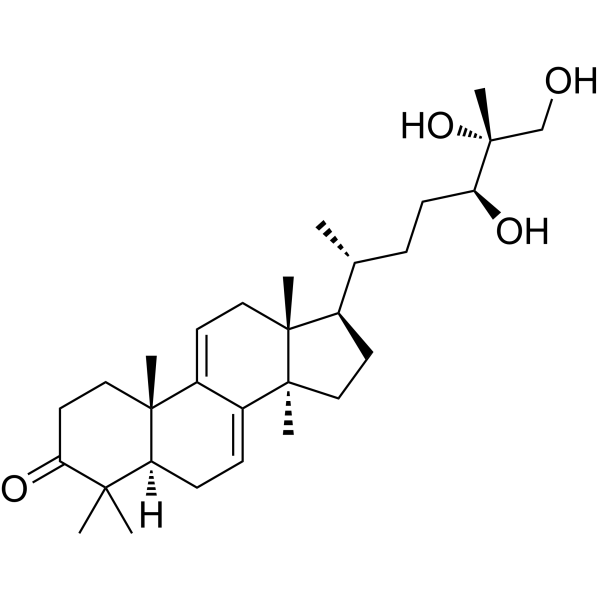
-
- HY-N1324
-
|
|
Others
|
Others
|
|
Sanggenon N is an isoprenylated flavonoid that can be isolated from the root bark of Morus alba.Sanggenon N has hepatoprotective activities on t-BHP-induced cell cytotoxicity in HepG2 cells with an EC50 of 23.45 μM .
|
-
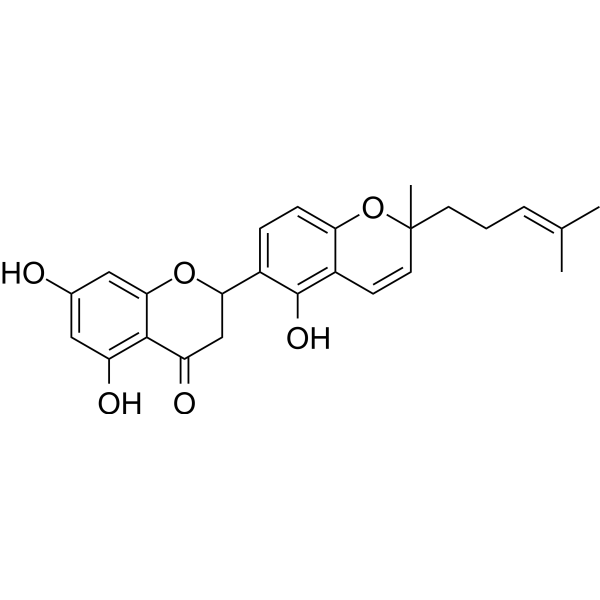
-
- HY-N0057
-
|
3,4-Di-O-caffeoylquinic acid; Isochlorogenic acid B
|
Glucosidase
Influenza Virus
Apoptosis
Endogenous Metabolite
|
Infection
Cancer
|
|
3,4-Dicaffeoylquinic acid (3,4-Di-O-caffeoylquinic acid), naturally isolated from Laggera alata, has antioxidative, DNA protective, neuroprotective and hepatoprotective properties. 3,4-Dicaffeoylquinic acid exerts apoptosis-mediated cytotoxicity and α-glucosidase inhibitory effects. 3,4-Dicaffeoylquinic acid possesses a unique mechanism of anti-influenza viral activity, that is, enhancing viral clearance by increasing TRAIL .
|
-
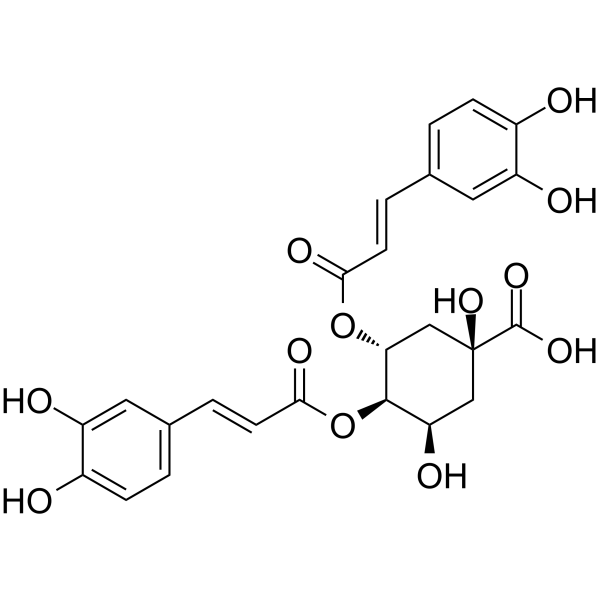
-
- HY-163478
-
|
|
NF-κB
|
Inflammation/Immunology
|
|
TNIK-IN-9 (Compound 54) is a selective and potent NIK inhibitor, with an IC50 of 1.27 nM. TNIK-IN-9 can inhibit pro-inflammatory cytokines and nitric oxide production. TNIK-IN-9 exhibits significant anti-inflammatory effects, improved mortality, and hepatoprotective effects in sepsis models .
|
-
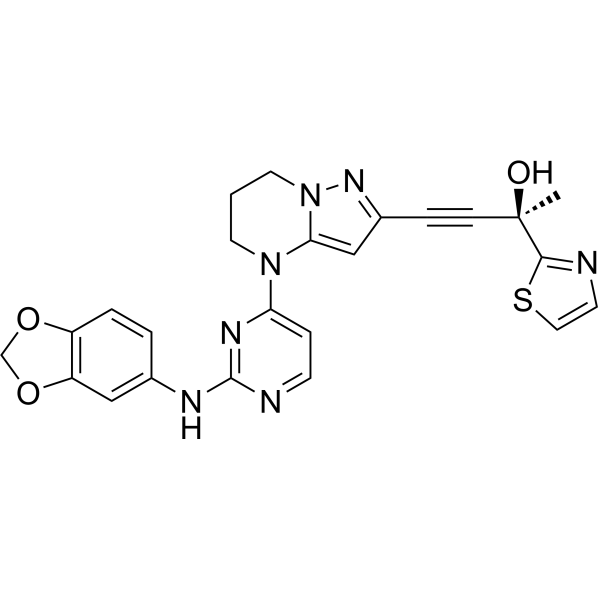
-
- HY-N0055
-
|
3-O-Caffeoylquinic acid; Heriguard; NSC-407296
|
HIF/HIF Prolyl-Hydroxylase
Reactive Oxygen Species
Bacterial
Influenza Virus
Endogenous Metabolite
|
Infection
Inflammation/Immunology
Cancer
|
|
Chlorogenic acid is a major phenolic compound in Lonicera japonica Thunb. It is an orally active antioxidant activity, antibacterial, hepatoprotective, cardioprotective, anti-inflammatory, antipyretic, neuroprotective, anti-obesity, antiviral, anti-microbial, anti-hypertension compound .
|
-

-
- HY-B0144A
-
|
NK-104
|
HMG-CoA Reductase (HMGCR)
Autophagy
Mitophagy
Apoptosis
|
Cardiovascular Disease
Neurological Disease
Metabolic Disease
Cancer
|
|
Pitavastatin (NK-104) is a potent hydroxymethylglutaryl-CoA (HMG-CoA) reductase inhibitor. Pitavastatin inhibits cholesterol synthesis from acetic acid with an IC50 of 5.8 nM in HepG2 cells. Pitavastatin is an efficient hepatocyte low-density lipoprotein-cholesterol (LDL-C) receptor inducer. Pitavastatin also possesses anti-atherosclerotic, anti-asthmatic, anti-osteoarthritis, antineoplastic, neuroprotective, hepatoprotective and reno-protective effects .
|
-
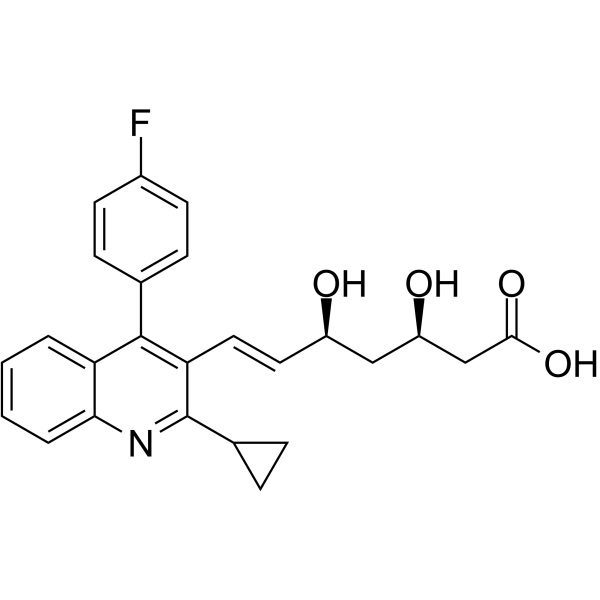
-
- HY-B0144B
-
|
NK-104 sodium
|
HMG-CoA Reductase (HMGCR)
Autophagy
Mitophagy
Apoptosis
|
Cardiovascular Disease
Neurological Disease
Metabolic Disease
Cancer
|
|
Pitavastatin (NK-104) sodium is a potent hydroxymethylglutaryl-CoA (HMG-CoA) reductase inhibitor. Pitavastatin sodium inhibits cholesterol synthesis from acetic acid with an IC50 of 5.8 nM in HepG2 cells. Pitavastatin sodium is an efficient hepatocyte low-density lipoprotein-cholesterol (LDL-C) receptor inducer. Pitavastatin sodium also possesses anti-atherosclerotic, anti-asthmatic, anti-osteoarthritis, antineoplastic, neuroprotective, hepatoprotective and reno-protective effects .
|
-
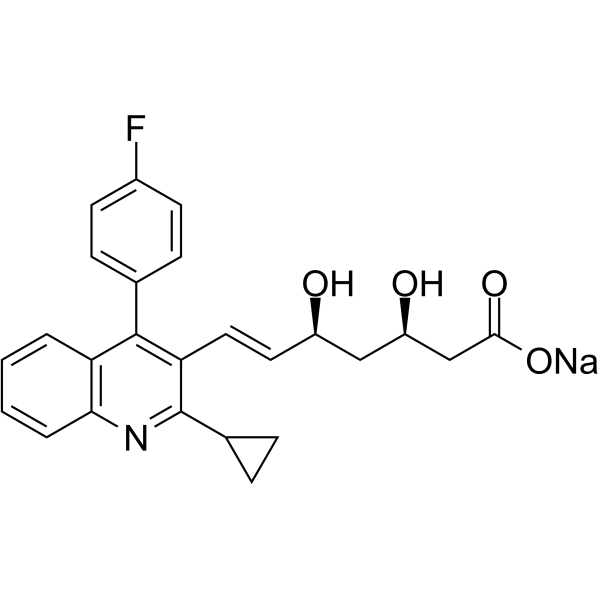
-
- HY-N7056
-
|
|
Oxidative Phosphorylation
Proteasome
|
Inflammation/Immunology
Cancer
|
|
4'-Hydroxychalcone is a chalcone isolated from licorice root, with hepatoprotective activity. 4'-Hydroxychalcone inhibits TNFα-induced NF-κB activation via proteasome inhibition. 4'-Hydroxychalcone induces a rapid potassium release from mitochondrial vesicles and causes deterioration of respiratory control and oxidative phosphorylation of isolated rat liver mitochondria .
|
-

-
- HY-N0148A
-
|
Rutoside hydrate; Quercetin 3-O-rutinoside hydrate
|
Amyloid-β
Autophagy
Apoptosis
Endogenous Metabolite
|
Neurological Disease
Cancer
|
|
Rutin (Rutoside) hydrate is a flavonoid found in many plants and shows a wide range of biological activities including anti-inflammatory, antidiabetic, antioxidant, neuroprotective, nephroprotective, hepatoprotective and reducing Aβ oligomer activities. Rutin hydrate can cross the blood brain barrier. Rutin hydrate attenuates vancomycin-induced renal tubular cell apoptosis via suppression of apoptosis, mitochondrial dysfunction, and oxidative stress .
|
-
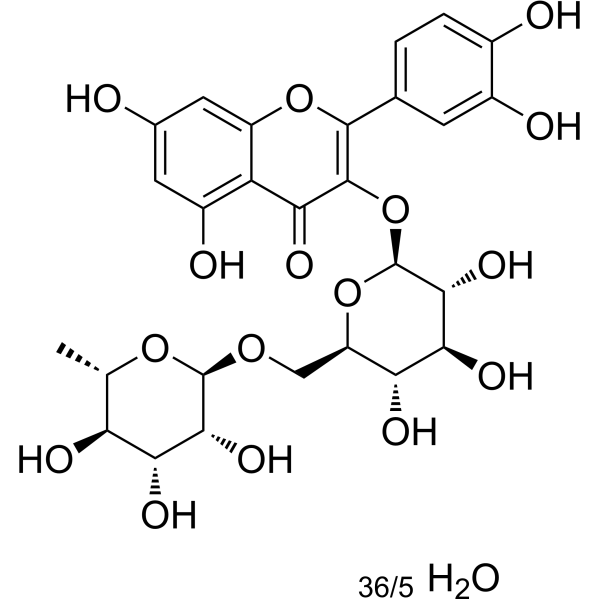
-
- HY-N0711
-
|
Cymophenol
|
Notch
Apoptosis
Fungal
Endogenous Metabolite
Bacterial
|
Infection
Inflammation/Immunology
Cancer
|
|
Carvacrol is an orally active monoterpenic phenol that can be extract from an abundant number of aromatic plants, including thyme and oregano, possessing antioxidant, antibacterial, antifungal, anticancer, anti-inflammatory, hepatoprotective, spasmolytic, and vasorelaxant properties. Carvacrol also causes cell cycle arrest in G0/G1, downregulates Notch-1, and Jagged-1, and induces apoptosis. Carvacrol is used in low concentrations as a food flavoring ingredient and preservative, as well as a fragrance ingredient in cosmetic formulations .
|
-
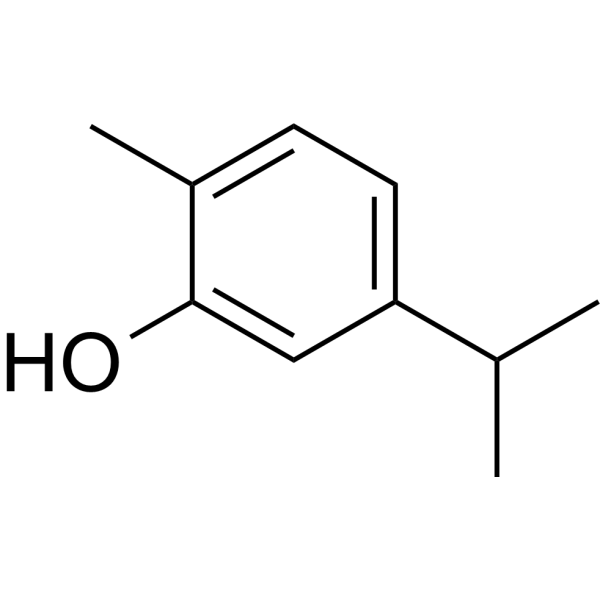
-
- HY-N0416
-
-

-
- HY-N0148
-
|
Rutoside; Quercetin 3-O-rutinoside
|
Amyloid-β
Autophagy
Apoptosis
Endogenous Metabolite
|
Inflammation/Immunology
Cancer
|
|
Rutin (Rutoside) is a flavonoid found in many plants and shows a wide range of biological activities including anti-inflammatory, antidiabetic, antioxidant, neuroprotective, nephroprotective, hepatoprotective and reducing Aβ oligomer activities. Rutin is also a CBR1 inhibitor, which can cross the blood brain barrier. Rutin attenuates vancomycin-induced renal tubular cell apoptosis via suppression of apoptosis, mitochondrial dysfunction, and oxidative stress .
|
-
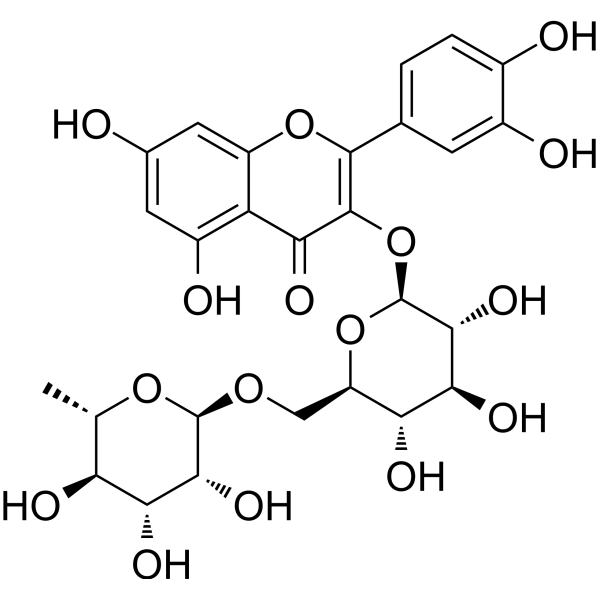
-
- HY-126052
-
|
|
COX
Tyrosinase
HDAC
|
Metabolic Disease
Cancer
|
|
Gnetol is a phenolic compound isolated from the root of Gnetum montanum . Gnetol potently inhibits COX-1 (IC50 of 0.78 μM) and HDAC. Gnetol is a potent tyrosinase inhibitor with an IC50 of 4.5 μM for murine tyrosinase and suppresses melanin biosynthesis. Gnetol has antioxidant, antiproliferative, anticancer and hepatoprotective activity. Gnetol also possesses concentration-dependent α-Amylase, α-glucosidase, and adipogenesis activities .
|
-
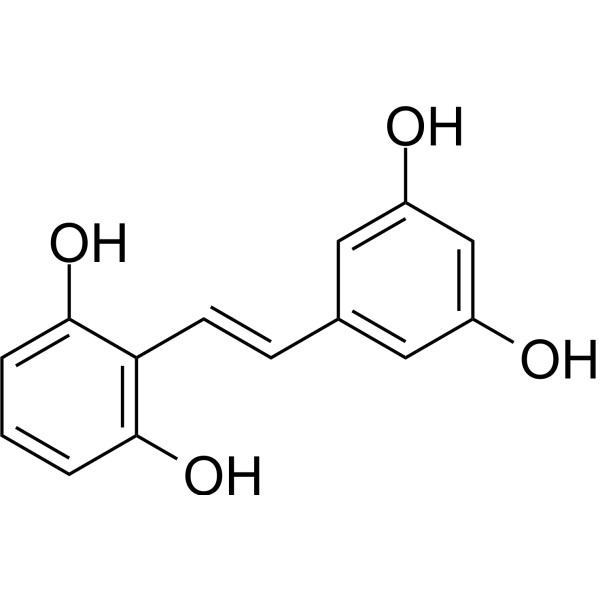
-
- HY-N0664
-
|
|
Bacterial
|
Infection
Neurological Disease
Inflammation/Immunology
Cancer
|
|
Aucubin, an iridoid glucoside, is isolated from Plantago asiatica, Eucommia ulmoides, the leaves of Aucuba japonica and more recently from butterfly larva. Aucubin has many biological activities, such as antioxidant, anti-aging, anti-inflammatory, antimicrobial, anti-fibrotic, anti-cancer, hepatoprotective, neuroprotective and osteoprotective effects .
|
-

-
- HY-N0368
-
-
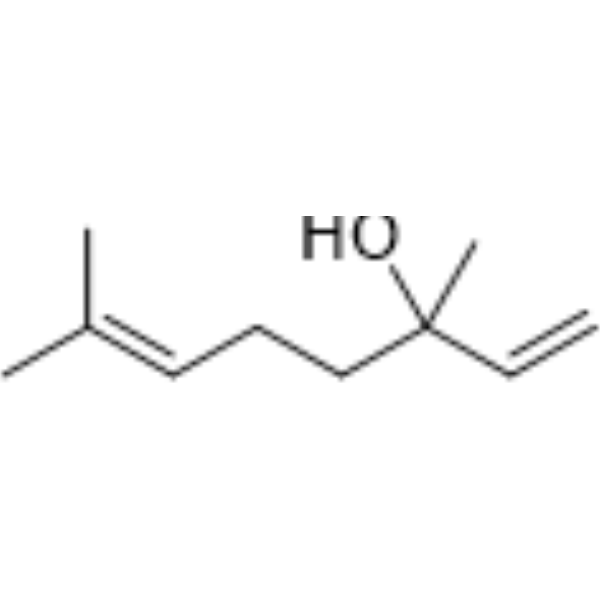
-
- HY-W032013S3
-
|
Octanol-d5
|
Calcium Channel
Endogenous Metabolite
Isotope-Labeled Compounds
|
Others
|
|
1-Octanol-d5 is deuterated labeled Carvacrol (HY-N0711). Carvacrol is an orally active monoterpenic phenol that can be extract from an abundant number of aromatic plants, including thyme and oregano, possessing antioxidant, antibacterial, antifungal, anticancer, anti-inflammatory, hepatoprotective, spasmolytic, and vasorelaxant properties. Carvacrol also causes cell cycle arrest in G0/G1, downregulates Notch-1, and Jagged-1, and induces apoptosis. Carvacrol is used in low concentrations as a food flavoring ingredient and preservative, as well as a fragrance ingredient in cosmetic formulations .
|
-
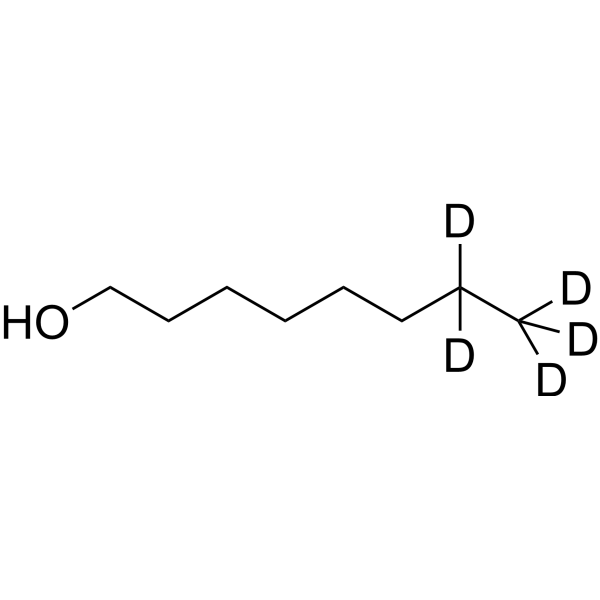
-
- HY-N1989
-
|
|
|
|
|
Bacoside A exhibits hepatoprotective activity .
|
-
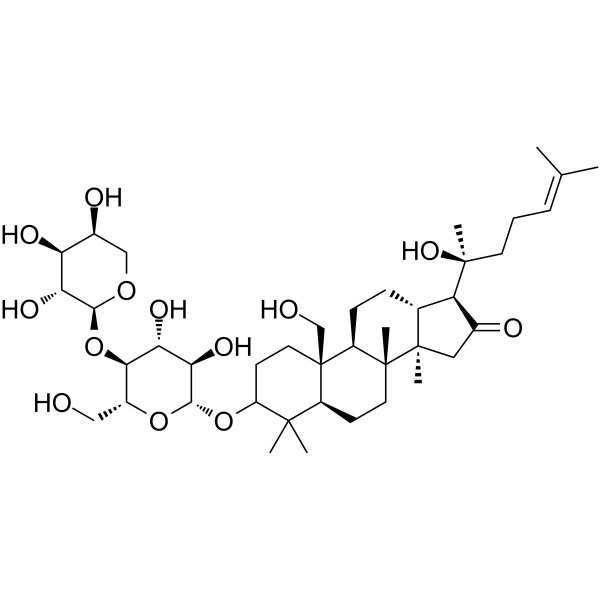
-
- HY-N2155
-
|
|
|
|
|
Tubuloside A is a phenylethanoid glycoside with antioxidative effect and hepatoprotective activity.
|
-
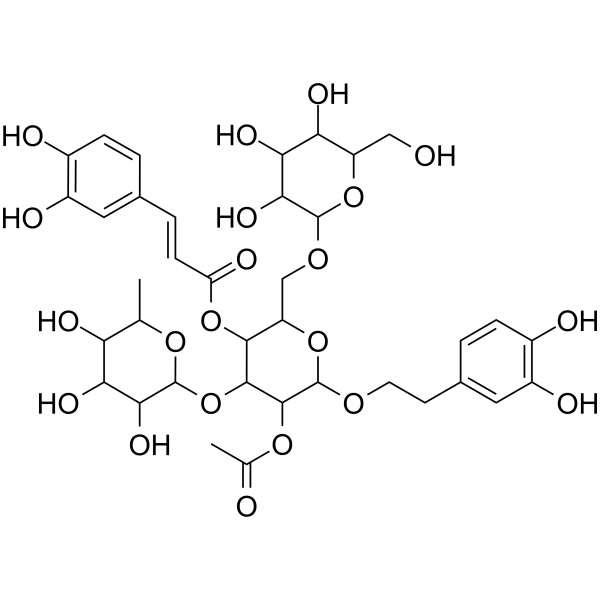
-
- HY-W010201S
-
|
(±)-Citronellol-d6; (±)-β-Citronellol-d6
|
Reactive Oxygen Species
Isotope-Labeled Compounds
|
Cancer
|
|
Citronellol-d6 is deuterated labeled Linalool (HY-N0368). Linalool is a natural monoterpene which is a competitive NMDA receptor antagonist. Linalool is orally active and crosses the blood-brain barrier. Linalool has anticancer, antibacterial, anti-inflammatory, neuroprotective, anxiolytic, antidepressant, anti-stress, cardioprotective, hepatoprotective, nephroprotective and pulmonary protective activities .
|
-
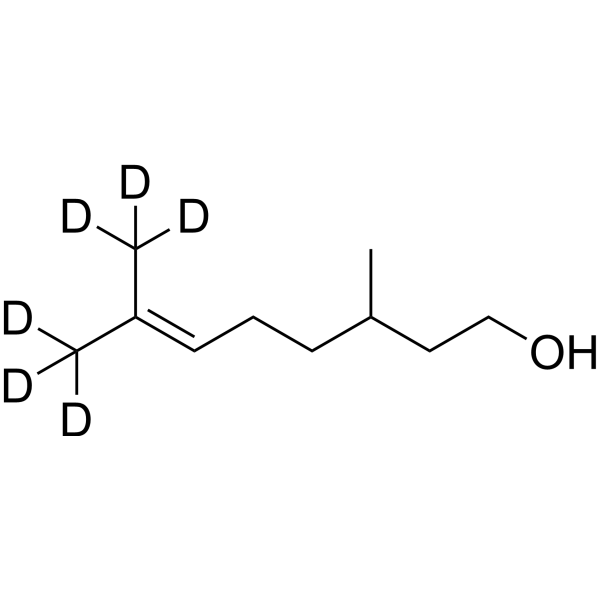
- HY-W024241
-
|
|
Others
|
Others
|
|
Tidiacic is a hepatoprotective agent that acts as an antioxidant and a sulfur donor .
|
-

- HY-N12442
-
|
|
Others
|
Metabolic Disease
|
|
Sarmenoside III is a flavonol glycoside with hepatoprotective activity isolated from Sedum sarmentosum.
|
-
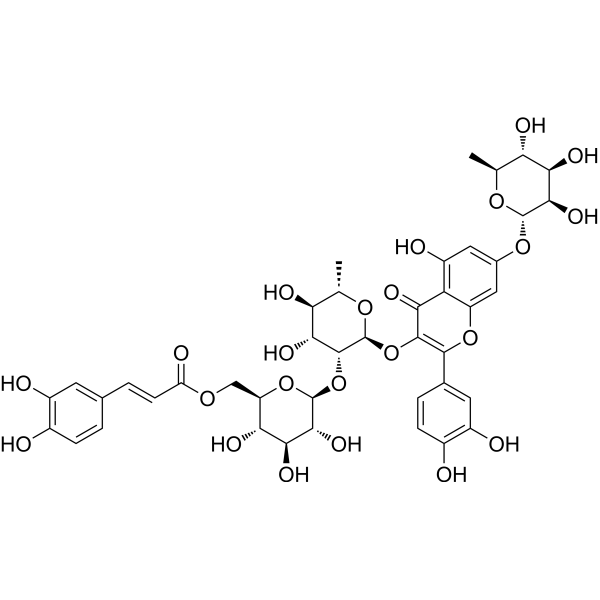
- HY-W010410S
-
|
|
Isotope-Labeled Compounds
|
Metabolic Disease
|
|
Oct-1-en-3-ol-d3 is deuterated labeled Linalool (HY-N0368). Linalool is a natural monoterpene which is a competitive NMDA receptor antagonist. Linalool is orally active and crosses the blood-brain barrier. Linalool has anticancer, antibacterial, anti-inflammatory, neuroprotective, anxiolytic, antidepressant, anti-stress, cardioprotective, hepatoprotective, nephroprotective and pulmonary protective activities .
|
-
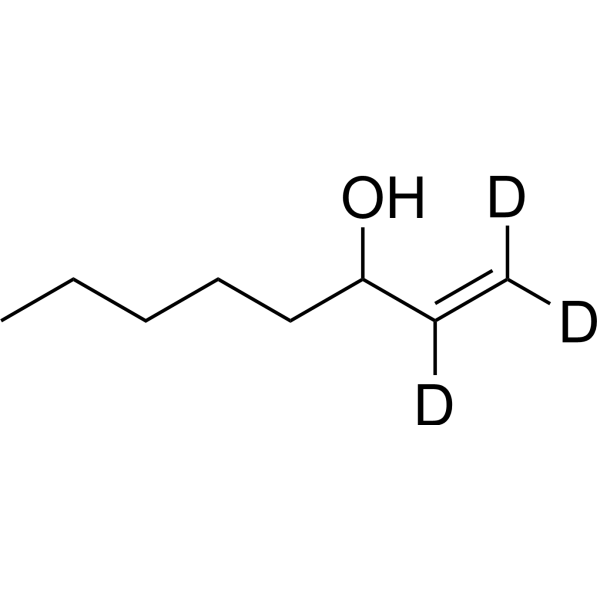
- HY-100242
-
|
YH439
|
Aryl Hydrocarbon Receptor
|
Others
|
|
Mivotilate is a nontoxic, potent activator of the aryl hydrocarbon receptor (AhR), and acts as a hepatoprotective agent.
|
-

- HY-N7919
-
|
|
Others
|
Metabolic Disease
|
|
Celosin H is a hepatoprotective triterpenoid saponin that can be isolated from Celosiae Semen .
|
-

- HY-115394
-
|
|
Others
|
Others
|
|
Soyasaponin IV, isolated from the aerial parts of Glycine soya, exhibits a hepatoprotective action .
|
-

- HY-N0806
-
|
|
Others
|
Metabolic Disease
|
|
Sweroside, isolated from Lonicera japonica, exhibits cytoprotective, anti-osteoporotic, and hepatoprotective effect .
|
-
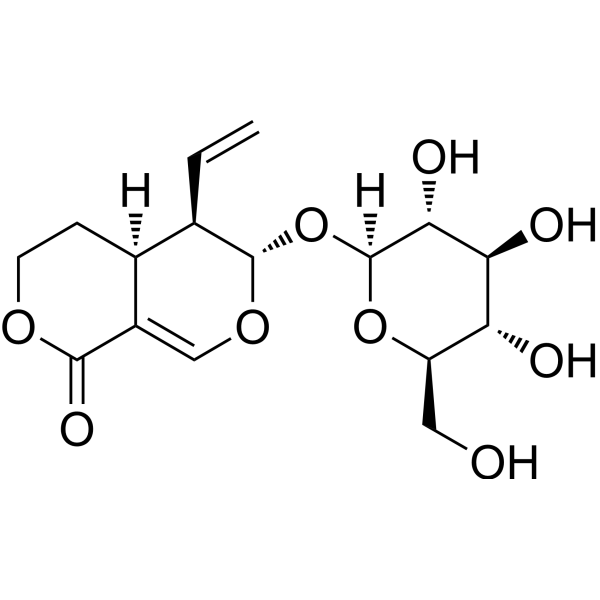
- HY-N9880
-
-
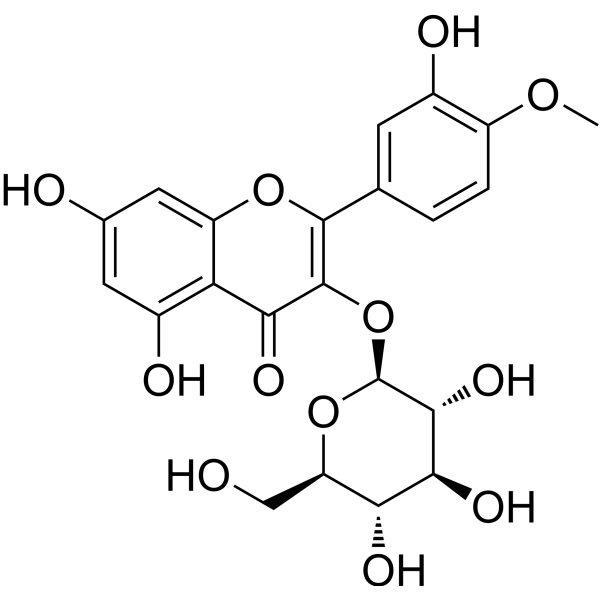
- HY-N9725
-
|
16ξ-Hydroxycleroda-3,13-dien-15,16-olide
|
Dipeptidyl Peptidase
|
Metabolic Disease
|
|
16-Hydroxycleroda-3,13-dien-15,16-olide (16ξ-Hydroxycleroda-3,13-dien-15,16-olide; HCD), a clerodane diterpene, is a potent serine protease dipeptidyl peptidase 4 (DPP-4) inhibitor. 16-Hydroxycleroda-3,13-dien-15,16-olide down-regulates LPS-induced ERK phosphorylation in myocyte but blocks GLP-1 induced PKA expression. 16-Hydroxycleroda-3,13-dien-15,16-olide exhibits hypolipidemic, hepatoprotective, hypoglycemic efficacy .
|
-
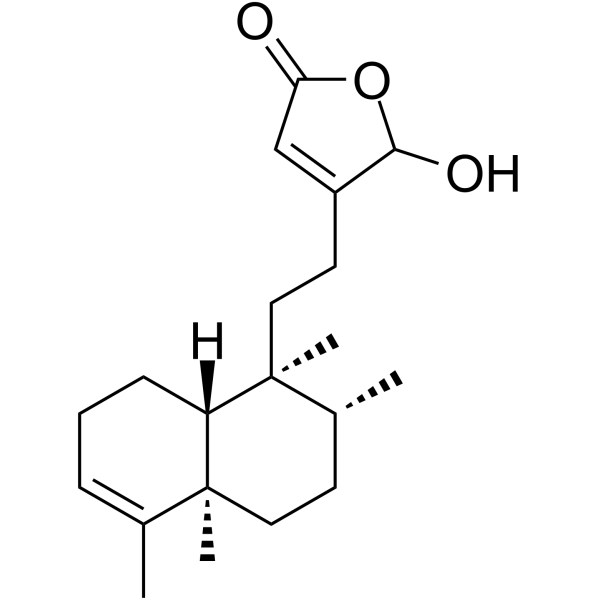
- HY-N7680
-
|
|
Others
|
Metabolic Disease
|
|
Neopuerarin A is an isoflavones isolated from the water extraction of the dried roots of Pueraria lobata (Willd.). Neopuerarin A shows significant hepatoprotective effect .
|
-
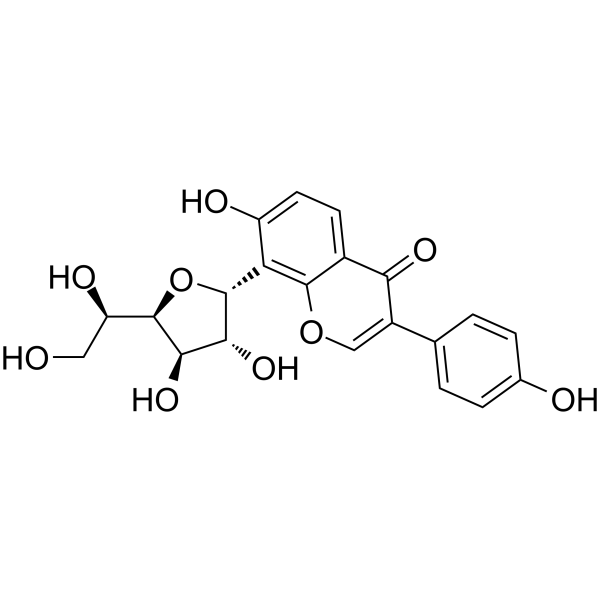
- HY-N10359
-
-

- HY-N7680A
-
|
|
Others
|
Metabolic Disease
|
|
Neopuerarin B is an isoflavones isolated from the water extraction of the dried roots of Pueraria lobata (Willd.). Neopuerarin B shows significant hepatoprotective effect .
|
-

- HY-N1616
-
|
|
Apoptosis
|
Others
|
|
1β-Hydroxyeuscaphic acid has significant hepatoprotective activity by lowering the leakage of intracellular enzymes, reducing the oxidation of proteins and decreasing the incidence of apoptosis .
|
-
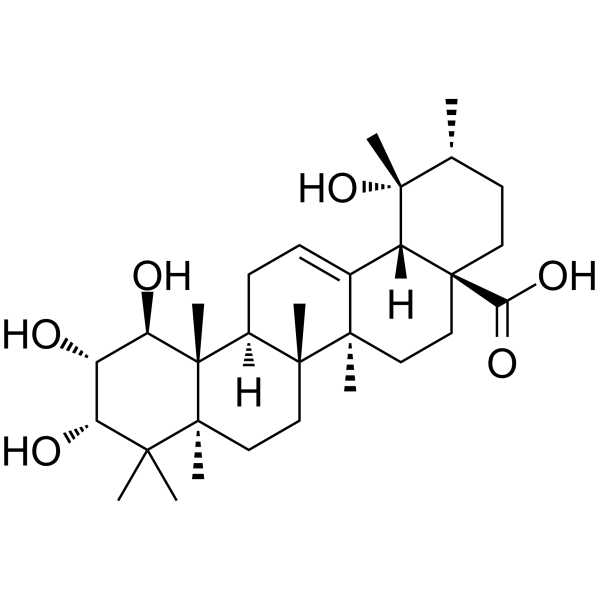
- HY-N1214
-
|
Super Squalene; trans-Squalene; AddaVax
|
|
|
|
Squalene (Super Squalene) is an intermediate product in the synthesis of cholesterol, and shows several pharmacological properties such as hypolipidemic, hepatoprotective, antiatherosclerotic, cardioprotective, antioxidant, and antitumour activity .
|
-
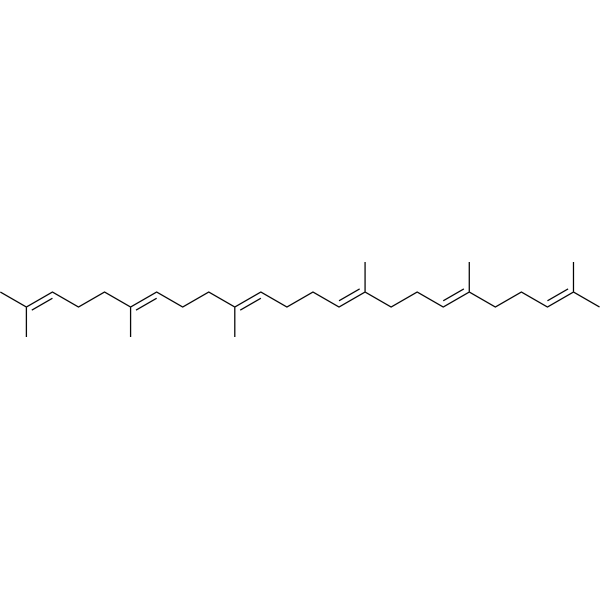
- HY-150521
-
-
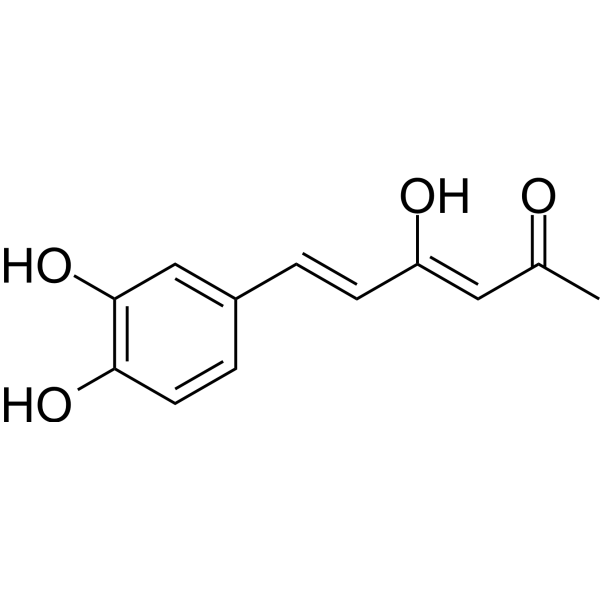
- HY-N0344
-
-

- HY-N12432
-
|
|
Others
|
Metabolic Disease
|
|
Glomeratide A is a benzophenone C-glucoside with hepatoprotective effects. Glomeratide A has a protective effect against d-galactosamine-induced hepatotoxicity in rat liver epithelial stem-like cells.
|
-
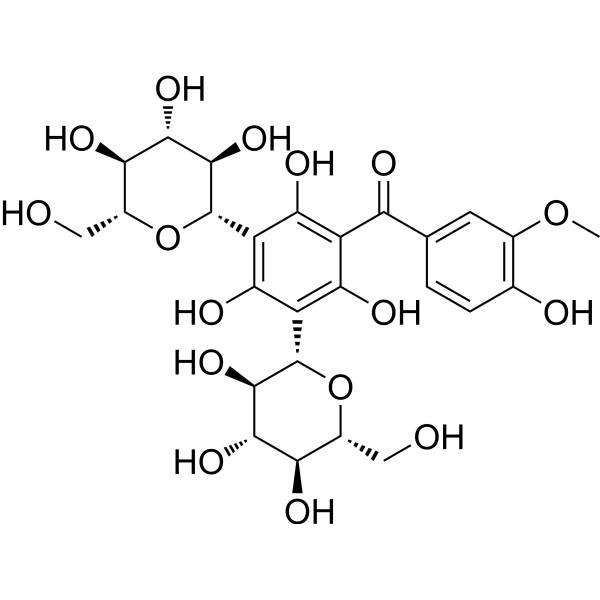
- HY-N12426
-
|
|
Others
|
Metabolic Disease
|
|
Heilaohuguosu F (compound 6) is a tetrahydrofuranolignan with weak hepatoprotective effects. Heilaohuguosu F has a mild protective effect against APAP-induced hepatotoxicity in HepG2 cells.
|
-
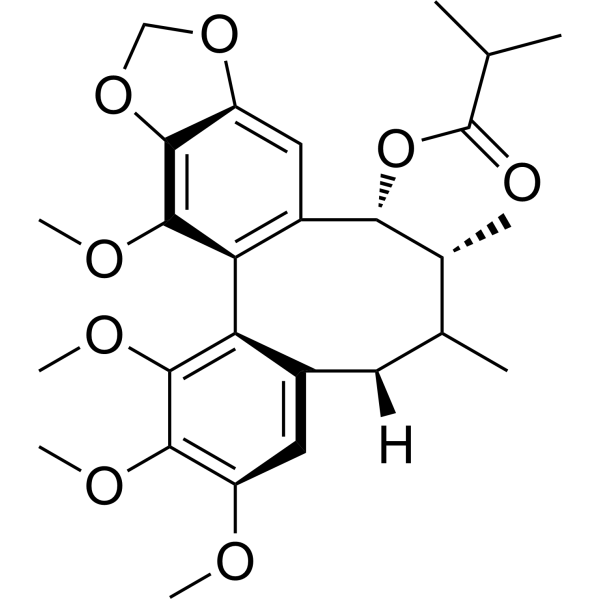
- HY-N12711
-
|
|
Others
|
Others
|
|
Calycosin 7-O-xylosylglucoside exhibits hepatoprotective efficacy in human hepatic cell HL-7702 through scavenging oxidative damage and antioxidant properties .
|
-
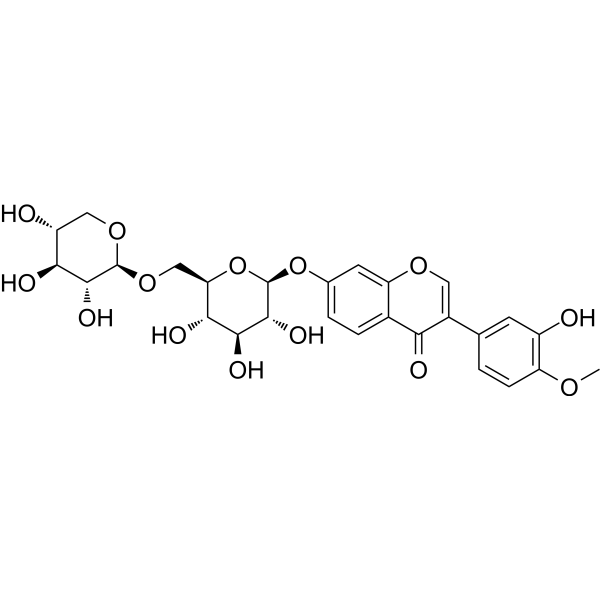
- HY-N0017
-
-
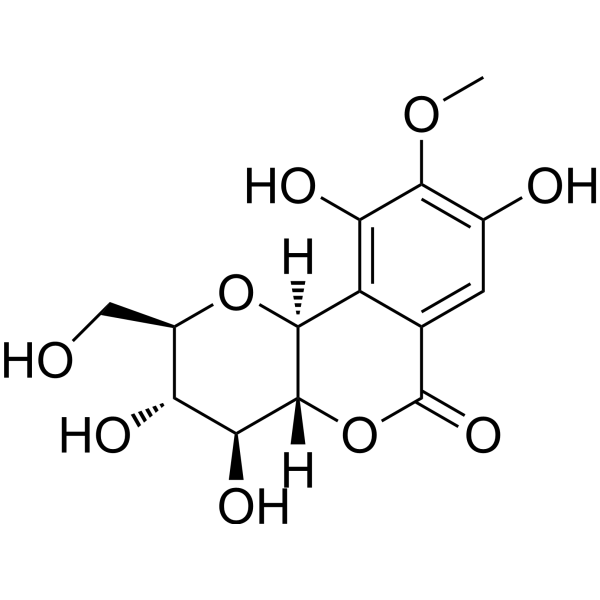
- HY-Y0073
-
|
P-hydroxyacetophenone
|
HBV
|
Infection
Inflammation/Immunology
|
|
4-Hydroxyacetophenone (P-hydroxyacetophenone) is a key hepatoprotective and choleretic compound in Artemisia capillaris and A. morrisonensis, also has an anti-hepatitis B virus effect and anti-inflammatory effect .
|
-

- HY-N12121
-
|
|
Others
|
Infection
Inflammation/Immunology
|
|
Piperundecalidine is an amide alkaloids that can be purified from Piper longum L. Piperundecalidine shows various biological properties, such as anti-inammatory, analgesic, anti-amoebic, anti-depressant, hepatoprotective,etc. .
|
-
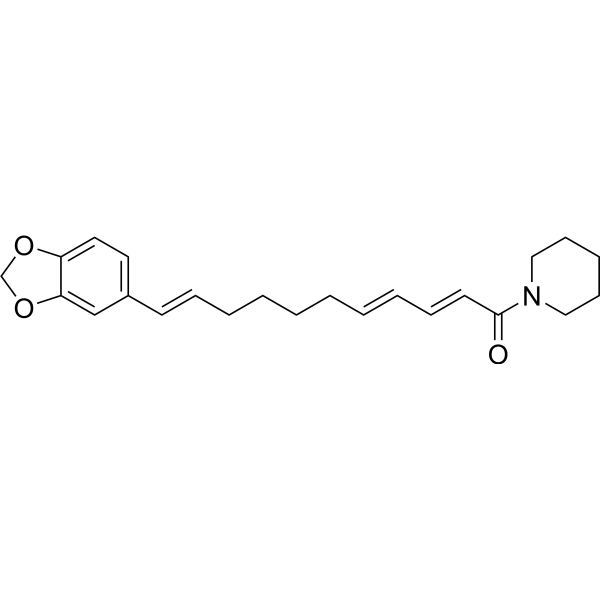
- HY-N4243
-
|
|
Others
|
Metabolic Disease
|
|
Neocurdione is a hepatoprotective sesquiterpene isolated from Curcuma zedoaria rhizome. Neocurdione exerts potent effect on D-galactosamine- (D-Gain) and lipopolysaccharide- (LPS) induced acute liver injury in mice .
|
-
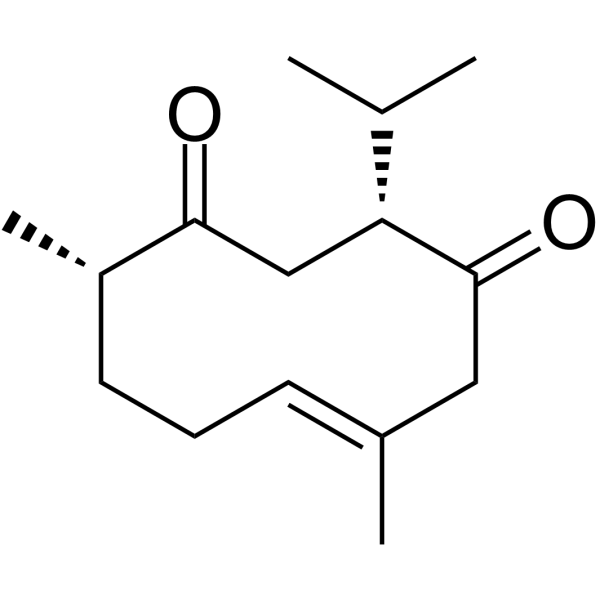
- HY-N2998
-
|
|
Others
|
Metabolic Disease
|
|
Ganoderenic acid A is a lanostane-type triterpene. Ganoderenic acid A is a potent inhibitor of β-glucuronidase. Ganoderenic acid A has a potent hepatoprotective effect against CCl4-induced liver injury .
|
-
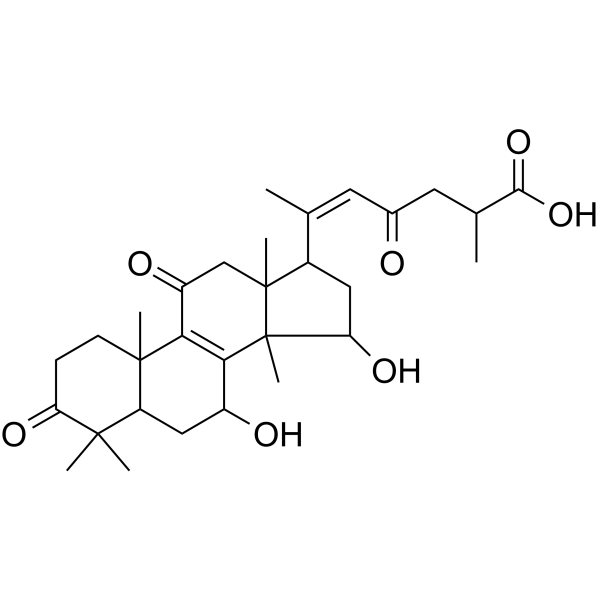
- HY-118383
-
-
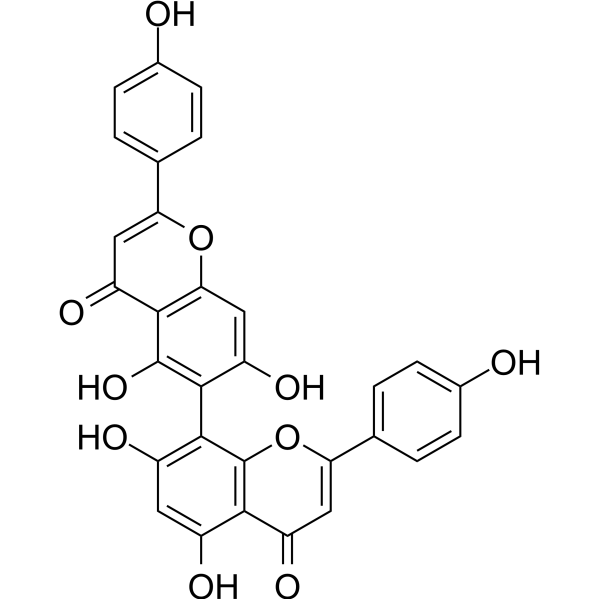
- HY-N12706
-
|
|
Endogenous Metabolite
|
Endocrinology
|
|
Heilaohuguosu G (compound 7) is a cyclolignan with hepatoprotective activity. Heilaohuguosu G against APAP toxicity with cell survival rates at 10 μM of 45.7% in HepG-2 cells .
|
-
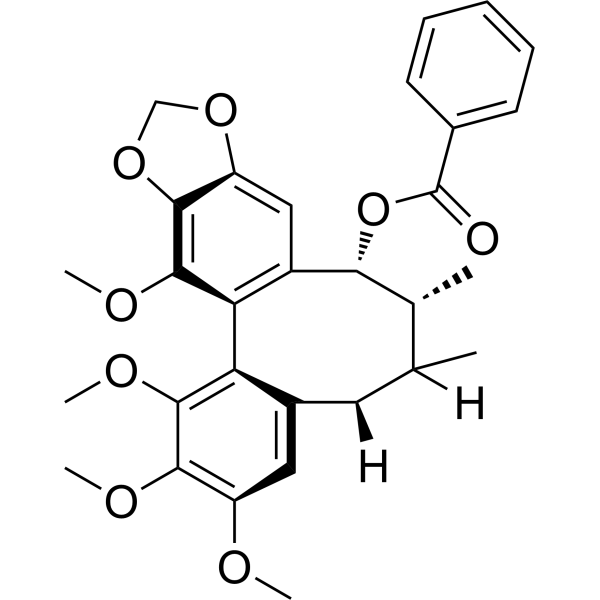
- HY-N3646
-
|
|
Others
|
Others
Neurological Disease
Inflammation/Immunology
Cancer
|
|
Cudratricusxanthone A is isolated from Cudrania tricuspidata, and has anti-inflammatory, hepatoprotective, and anti-proliferative activities. Cudratricusxanthone A inhibits osteoclast differentiation and function in RAW 264.7 cells and mouse bone marrow monocytes .
|
-
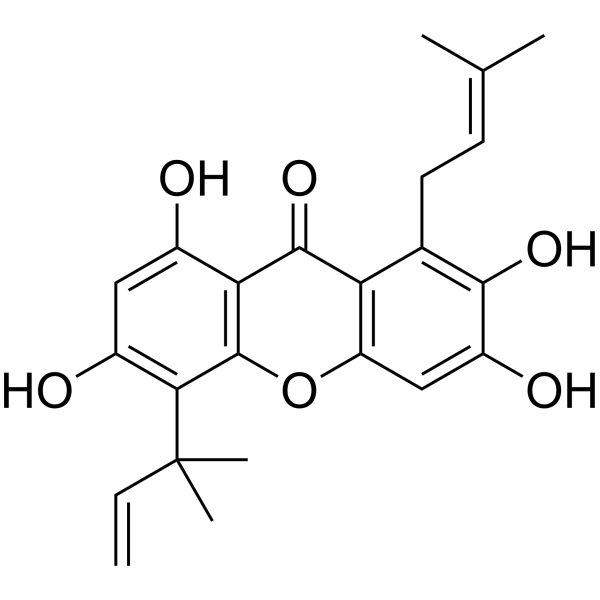
- HY-N2094
-
|
Genipin 1-gentiobioside; Genipin 1-β-gentiobioside; Genipin gentiobioside
|
Others
|
Inflammation/Immunology
|
|
Genipin 1-β-D-gentiobioside (Genipin 1-gentiobioside) is one of the most abundant and bioactive iridoid glycosides in Gardenia jasminoides Ellis, which possesses hepatoprotective, anti-inflammatory, antioxidant, and antithrombotic activities.
|
-
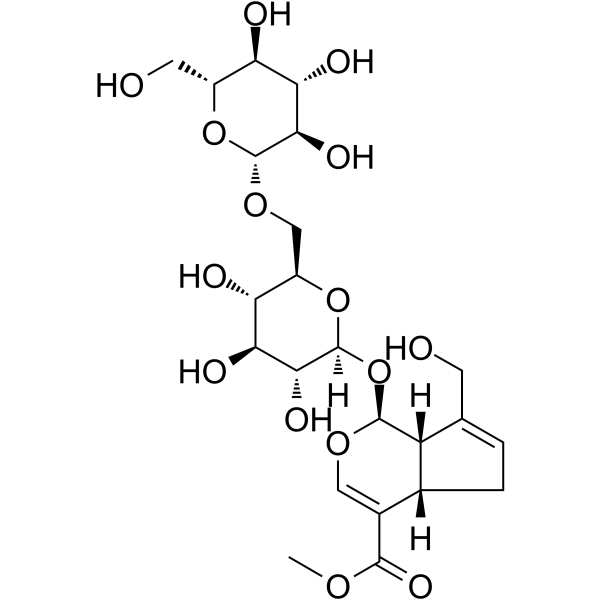
- HY-N1508
-
|
|
Others
|
Inflammation/Immunology
|
|
Ecliptasaponin A , a pentacyclic triterpenoid saponin, is one of major compounds separated from Eclipta prostrate . Eclipta prostrate is considered as a nourishing herbal medicine with pleiotropic effects, including anti-inflammatory, hepatoprotective, antioxidant, and immunomodulatory .
|
-

- HY-N2000
-
|
|
|
|
|
Bellidifolin is a xanthone isolated from the stems of Swertia punicea, with hepatoprotective, hypoglycemic, anti-oxidation, anti-inflammatory and antitumor activities . Bellidifolin also acts as a viral protein R (Vpr) inhibitor .
|
-

- HY-N0269
-
-
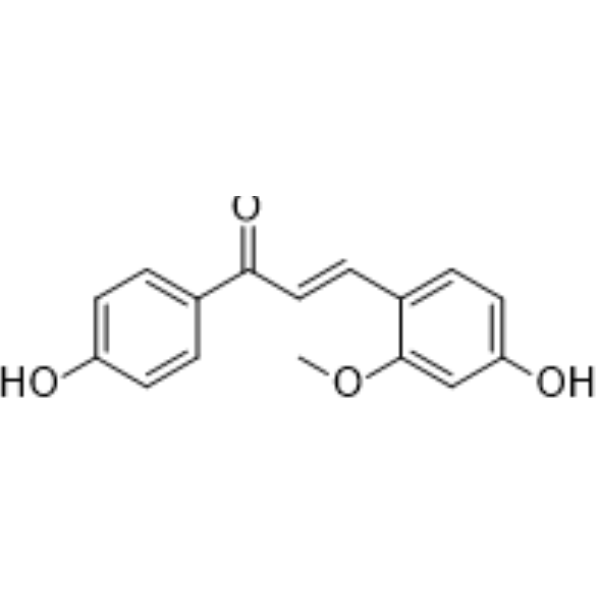
- HY-N9966
-
|
|
Others
|
Others
|
|
Sanggenol O? is an active product that can be extracted from Morus alba. Sanggenol O? has hepatoprotective and neuroprotective activities with EC50s more than 80 μM in HepG2 and HT22 cells .
|
-
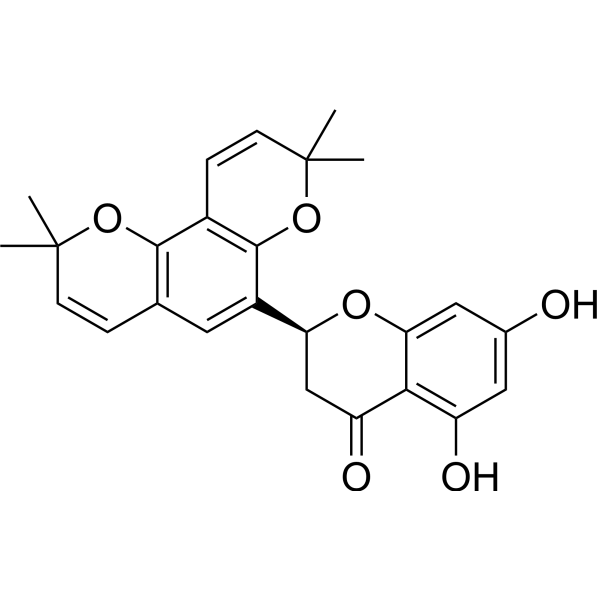
- HY-N0823
-
|
(+)-Lithospermic acid
|
Others
|
Inflammation/Immunology
|
|
Lithospermic acid ((+)-Lithospermic acid) is a plant-derived polycyclic phenolic carboxylic acid isolated from Salvia miltiorrhiza, and has the anti-oxidative and hepatoprotective activity on carbon tetrachloride (CCl4)-induced acute liver damage in vitro and in vivo .
|
-
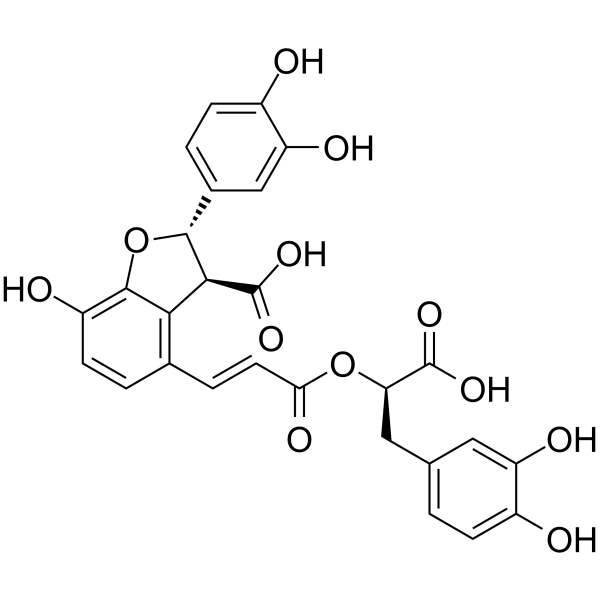
- HY-N9096
-
|
|
Bacterial
|
Neurological Disease
|
|
Gentiside B has neuritogenic activity and induce neurite outgrowth. Gentiside B can be isolated from the root and rhizome of Gentiana rigescens. Gentiana has hepatoprotective, anti-inflammatory, analgesic, antiproliferative and antimicrobial effects .
|
-
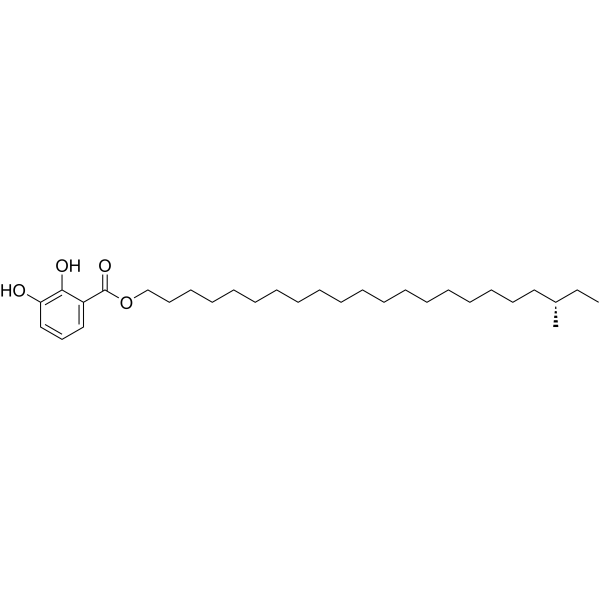
- HY-N2191
-
|
|
|
|
|
Ecliptasaponin D is a triterpenoid glucoside isolated from Eclipta alba (L.) Hassk which is the aerial part of Eclipta prostrate. Eclipta prostrate is considered as a nourishing herbal medicine with pleiotropic effects, including anti-inflammatory, hepatoprotective, antioxidant and immunomodulatory [1,2].
|
-
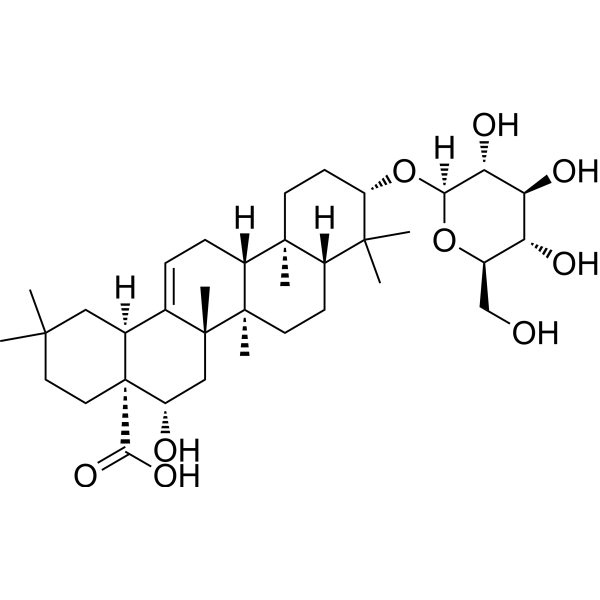
- HY-N0526
-
|
|
Others
|
Inflammation/Immunology
|
|
2"-O-Galloylhyperin, an active compound isolated from Pyrola incarnate Fisch., possesses anti-oxidative and anti-inflammatory activities. 2"-O-Galloylhyperin has hepatoprotective effect against oxidative stress-induced liver damage .
|
-

- HY-N0222
-
-

- HY-N1969
-
|
3,8-Di-O-methylellagic acid
|
|
|
|
3,3'-Di-O-methylellagic acid obtained from Euphorbia adenochlora selectively inhibits the formation of acid-fastness in mycobacteria without retardation of their growth. 3,3'-di-O-methylellagic acid as a hepatoprotective compound is apparently due to its antioxidative effect .
|
-
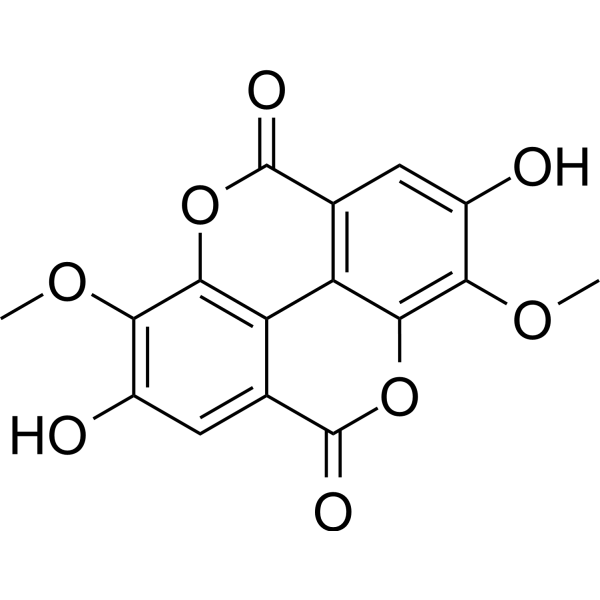
- HY-N4278
-
|
|
Reactive Oxygen Species
|
Inflammation/Immunology
|
|
Huangjiangsu A, pseudoprotodioscin, methyl protobioside, protodioscin, and protodeltonin, isolated from D. villosa.
Huangjiangsu A has hepatoprotective potential against H2O2-induced cytotoxicity and ROS generation and could be promising as potential therapeutic agents for liver diseases .
|
-
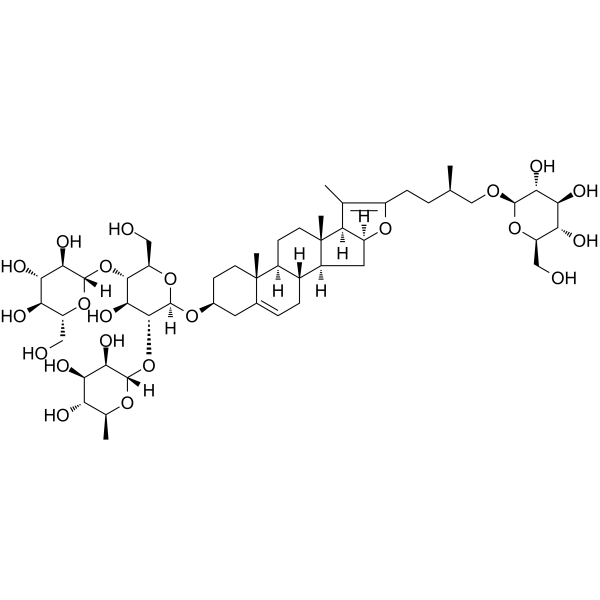
- HY-N2831
-
|
|
Others
|
Others
|
|
Agrimonolide 6-O-β-D-glucoside is a isocoumarin that can be isolated from Agrimonia pilosa. Agrimonolide 6-O-β-D-glucoside is used in hepatic disease research .
|
-

- HY-N7026
-
|
|
Others
|
Metabolic Disease
|
|
Celosin I, an oleanane-type triterpenoid saponin isolated from the seeds of Celosia argentea L, could be used as chemical markers for the quality control of C. argentea seeds. Celosin I exhibits significant hepatoprotective effect on carbon tetrachloride-induced and N,N-dimethylformamide-induced hepatotoxicity in mice .
|
-

- HY-N1478
-
|
|
|
|
|
Gardenoside is a natural compound found in Gardenia fruits, with hepatoprotective properties. Gardenoside suppresses the pain of chronic constriction injury by regulating the P2X3 and P2X7 receptors. Gardenoside has an inhibitory effect on free fatty acids (FFA)-induced cellular steatosis .
|
-

- HY-N3240
-
|
|
Others
|
Neurological Disease
|
|
Mulberrofuran C (compound 11) is an isoprene based flavonoid compound that can be extracted from the root bark of mulberry trees. Mulberrofuran C has protective effect on t-BHP induced oxidative stress with EC50 value of 1.02 μM. Mulberrofuran C has hepatoprotective and neuroprotective activities .
|
-
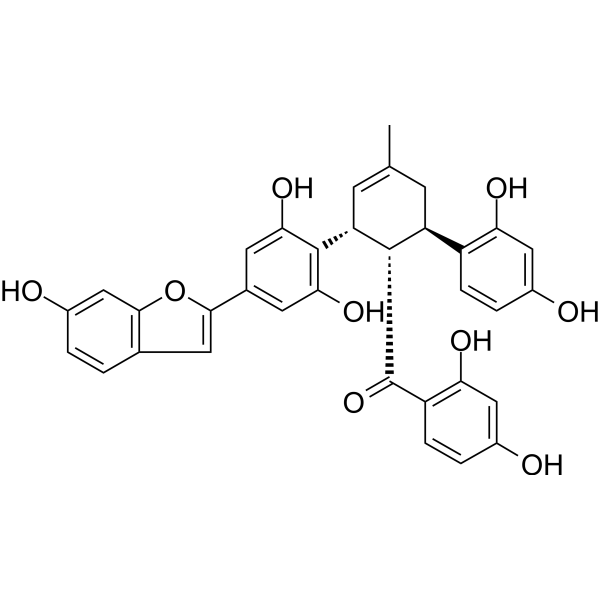
- HY-N0692
-
|
Gomisin-A; TJN-101; Wuweizi alcohol-B
|
Reactive Oxygen Species
Cytochrome P450
Autophagy
|
Cancer
|
|
Schisandrol B (Gomisin-A) is a major active constituent of Schisandra chinensis with hepato-protective effects. Schisandrol B inhibits reactive oxygen species (ROS) production. Schisandrol B inhibits the activity of P-glycoprotein and CYP3A and also has anti-inflammatory, anti-diabetic and antioxidant activities .
|
-
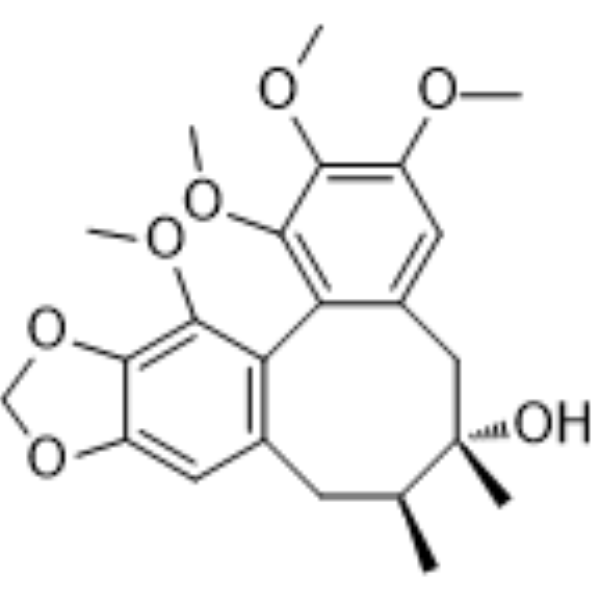
- HY-125911
-
|
|
NF-κB
|
Cardiovascular Disease
Inflammation/Immunology
Cancer
|
|
Gossypin is a flavone isolated from Hibiscus vitifolius and has antioxidant, antiinflammatory, anticancer, anticataract, antidiabetic, and hepatoprotective activities. Gossypin inhibits NF-κB and NF-κB-regulated gene expression. Gossypin inhibits RANKL-induced osteoclastogenesis both in mouse primary bone marrow cells and RAW 264.7 cells in vitro .
|
-
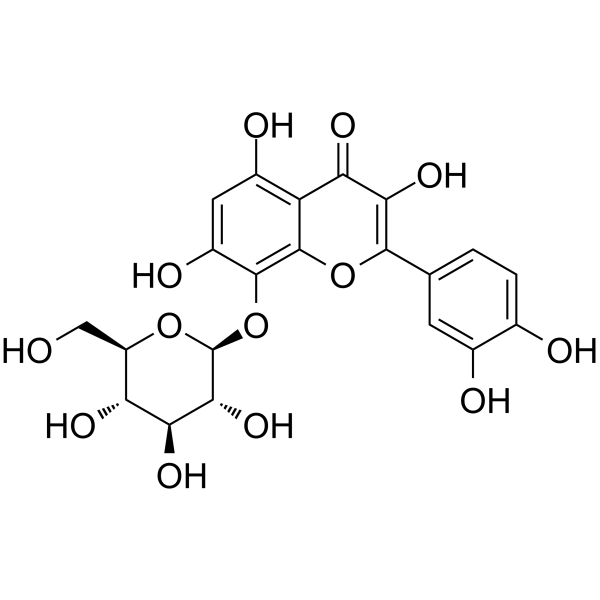
- HY-W068771
-
|
|
Endogenous Metabolite
|
Neurological Disease
Metabolic Disease
|
|
(E)-3-(4-Methoxyphenyl)acrylic acid (compound 3) is isolated from Arachis hypogaea, Scrophularia buergeriana Miquel, Aquilegia vulgaris, Anigozanthos preissii and so on. (E)-3-(4-Methoxyphenyl)acrylic acid shows significant hepatoprotective activity, anti-amnesic, cognition-enhancing activity, antihyperglycemic, and neuroprotective activities .
|
-
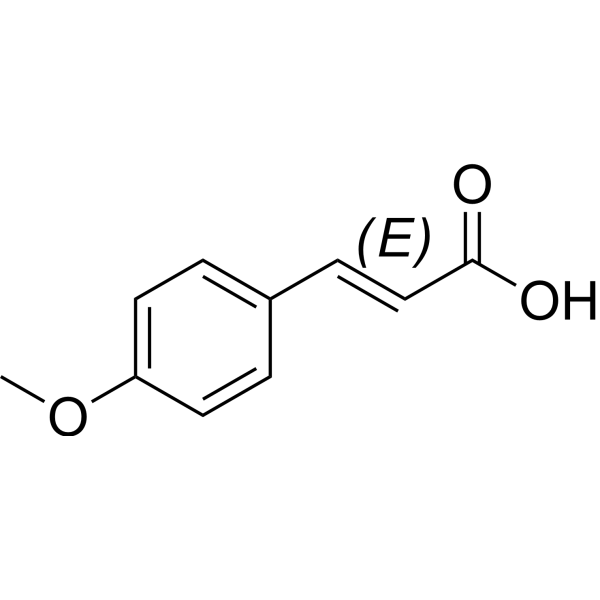
- HY-19893
-
|
(+)-Antroquinonol
|
|
|
|
Antroquinonol ((+)-Antroquinonol), a ubiquinone derivative from the mushroom Antrodia camphorata, has hepatoprotective, anti-inflammatory, and anti-cancer effects . Antroquinonol can be used for the research of colon cancer . Antroquinonol reduces oxidative stress by enhancing the Nrf2 signaling pathway and inhibits inflammation and sclerosis in focal segmental glomerulosclerosis mice .
|
-
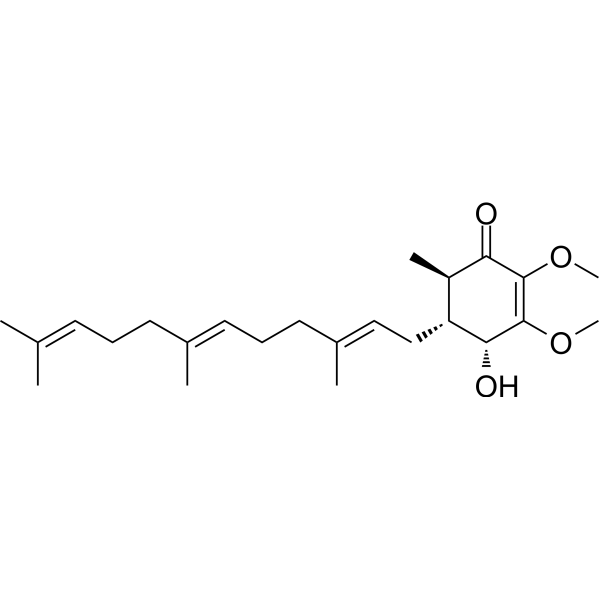
- HY-W010800
-
|
|
Topoisomerase
DNA/RNA Synthesis
Apoptosis
Necroptosis
|
Cancer
|
|
Cholesteryl hemisuccinate is a with hepatoprotective an anticancer activity. Cholesteryl hemisuccinate inhibits Acetaminophen (AAP, HY-66005) hepatotoxicity, and prevents AAP-induced hepatic apoptosis and necrosis. Cholesteryl hemisuccinate inhibits DNA polymerase and DNA topoisomerase to inhibit DNA replication and repair and cell division. Thus, Cholesteryl hemisuccinate inhibits tumor growth .
|
-
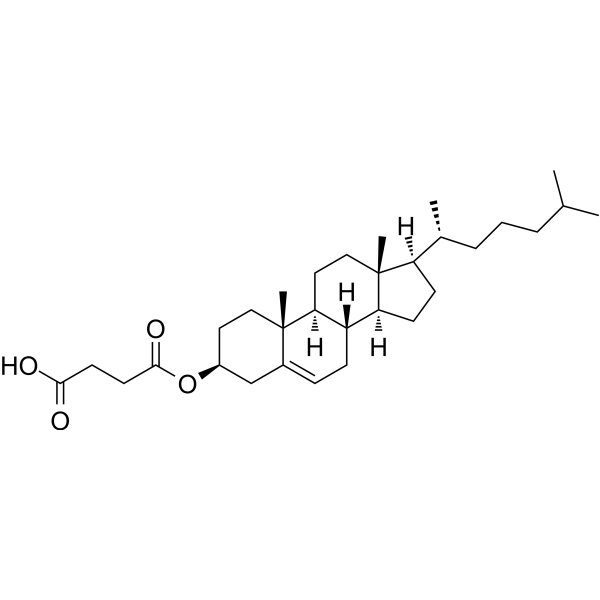
- HY-N10755A
-
|
|
Cytochrome P450
Bacterial
|
Infection
|
|
(±)-ε-Viniferin is a racemate of ε-Viniferin (HY-N3841). (±)-ε-Viniferin exhibits P450 inhibitory antioxidants, as well as hepato-protective and antimicrobial activities. (±)-ε-Viniferin has antibacterial and antibiofilm activity against Gram-positive bacteria Streptococcus pneumoniae with a MIC of 20 μM .
|
-

- HY-N0108
-
|
Parietin; Rheochrysidin
|
Bacterial
|
Infection
Inflammation/Immunology
Cancer
|
|
Physcion (Parietin) is an anthraquinone isolated from traditional Chinese medicine Radix et Rhizoma Rhei, acts as an inhibitor of 6-phosphogluconate dehydrogenase, with an IC50 and a Kd of 38.5 μM and 26.0 μM, respectively . Physcion (Parietin) exhibits laxative, hepatoprotective, anti-inflammatory, anti-microbial, anti-proliferative and anti-tumor effects .
|
-
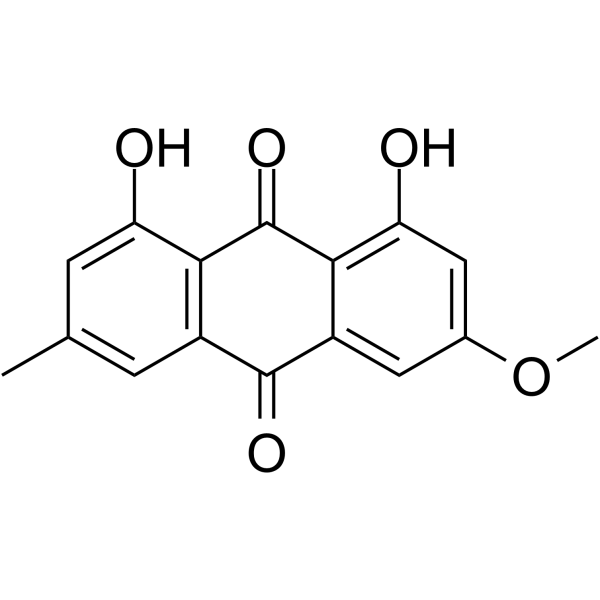
- HY-N0222R
-
|
|
COX
NF-κB
PPAR
ERK
GLUT
Apoptosis
|
Infection
Neurological Disease
Inflammation/Immunology
Cancer
|
|
Avicularin (Standard) is the analytical standard of Avicularin. This product is intended for research and analytical applications. Avicularin is an orally active flavonoid. Avicularin inhibits NF-κB (p65), COX-2 and PPAR-γ activities. Avicularin has anti-inflammatory, anti-infectious anti-allergic, anti-oxidant, hepatoprotective, and anti-tumor activities .
|
-
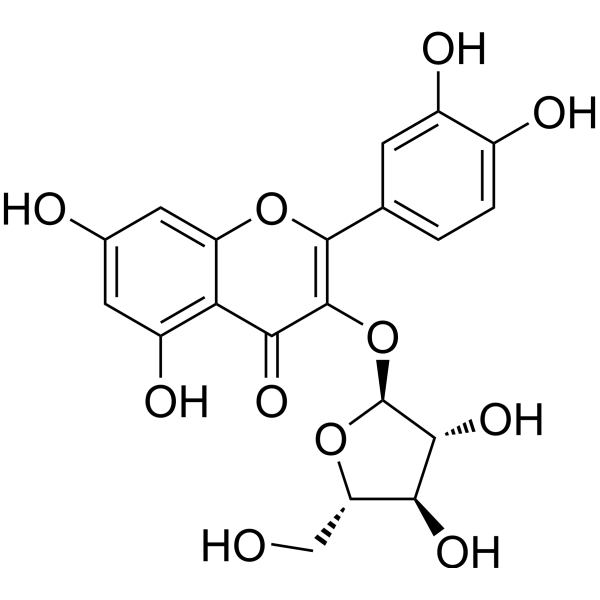
- HY-N0462
-
|
|
Reverse Transcriptase
Bacterial
Apoptosis
Autophagy
|
Infection
Inflammation/Immunology
Cancer
|
|
Corilagin, a gallotannin, has anti-tumor, anti-inflammatory and hepatoprotective activities. Corilagin inhibits activity of reverse transcriptase of RNA tumor viruses. Corilagin also inhibits the growth of Staphylococcus aureus with a MIC of 25 μg/mL. Corilagin shows anti-tumor activity on hepatocellular carcinoma and ovarian cancer model. Corilagin shows low toxicity to normal cells and tissues .
|
-

- HY-N0108S
-
|
Parietin-d3; Rheochrysidin-d3
|
Isotope-Labeled Compounds
Bacterial
|
Infection
Inflammation/Immunology
Cancer
|
|
Physcion-d3 (Parietin-d3) is the deuterium labeled Physcion (HY-N0108). Physcion acts as an inhibitor of 6-phosphogluconate dehydrogenase, with an IC50 and a Kd of 38.5 μM and 26.0 μM, respectively. Physcion exhibits laxative, hepatoprotective, anti-inflammatory, anti-microbial, anti-proliferative and anti-tumor effects .
|
-
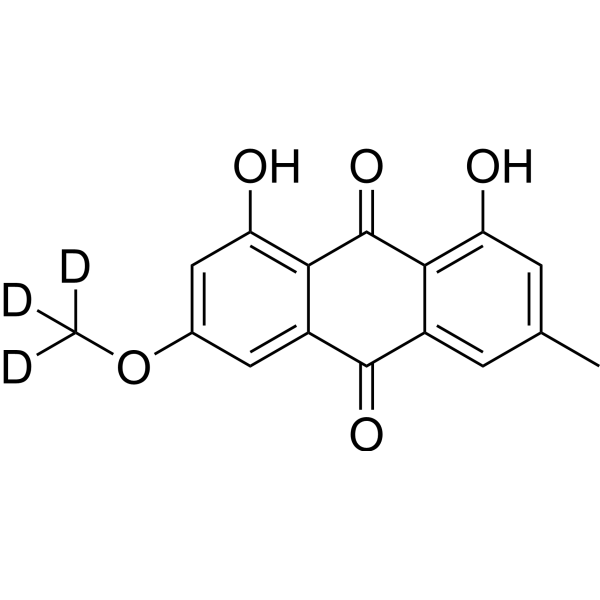
- HY-N2259
-
|
(+)-Curcumenol
|
|
|
|
Curcumenol ((+)-Curcumenol) is a potent CYP3A4 inhibitor with an IC50 of 12.6 μM, which is one of constituents in the plants of medicinally important genus of Curcuma zedoaria, with neuroprotection, anti-inflammatory, anti-tumor and hepatoprotective activities. Curcumenol ((+)-Curcumenol) suppresses Akt-mediated NF-κB activation and p38 MAPK signaling pathway in LPS-stimulated BV-2 microglial cells .
|
-
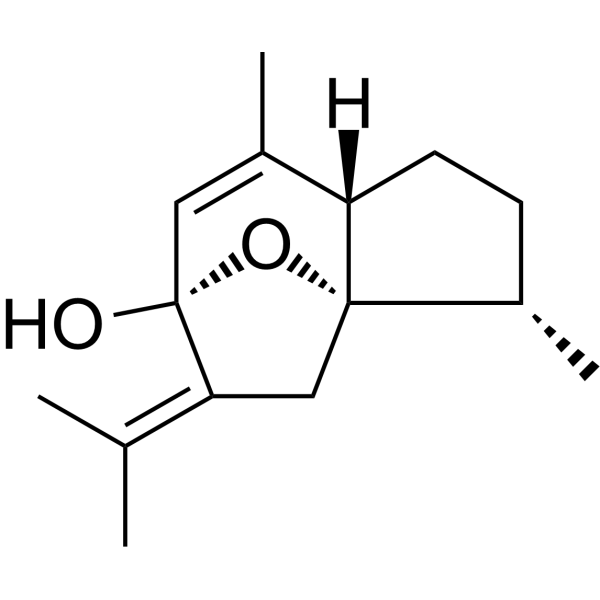
- HY-N0407
-
|
6'-Cinnamoylcatalpol
|
STAT
|
Inflammation/Immunology
|
|
Picroside I is the major ingredient of Picrorhiza scrophulariiflora. Picrorhiza scrophulariiflora is a high value medicinal herb due to rich source of hepatoprotective metabolites, Picroside-I and Picroside-II . Picroside I is a promising agent for the management of asthma. Picroside I reduces the inflammation significantly at its higher dose. Picroside I also downregulates pSTAT6 and GATA3 expressions. Picroside I dose-dependently increases the serum levels of IFN-γ .
|
-
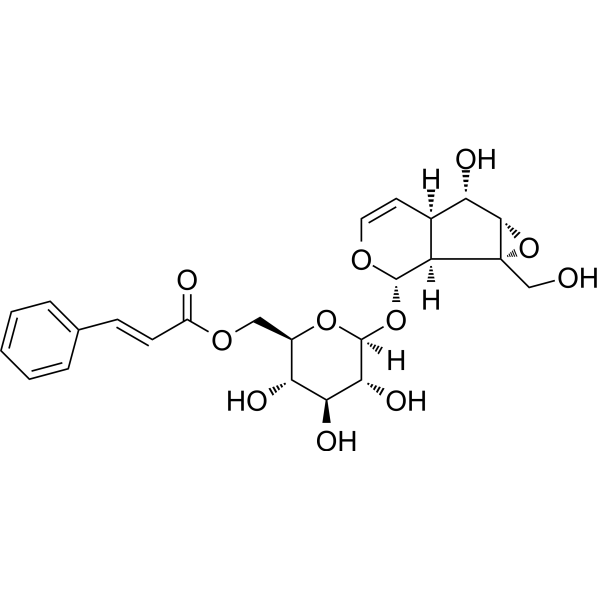
- HY-D0803
-
|
|
Apoptosis
VEGFR
PI3K
Akt
|
Infection
Cardiovascular Disease
Neurological Disease
Inflammation/Immunology
Cancer
|
|
Thymoquinone is an orally active natural product isolated from N. sativa Thymoquinone down-regulates the VEGFR2-PI3K-Akt pathway. Thymoquinone has antioxidant, anti-inflammatory, anticancer, antiviral, anticonvulsant, antifungal, antiviral, antiangiogenic activity and hepatoprotective effects. Thymoquinone can be used to study Alzheimer's disease, cancer, cardiovascular disease, infectious disease and inflammation .
|
-

- HY-N0055S
-
|
3-O-Caffeoylquinic acid-13C3; Heriguard-13C3; NSC-407296-13C3
|
Isotope-Labeled Compounds
|
Cancer
|
|
Chlorogenic acid- 13C3 (Heriguard- 13C3; NSC-407296- 13C3) is 13C- and 15N-labeled Chlorogenic acid (HY-N0055). Chlorogenic acid is a major phenolic compound in Lonicera japonica Thunb.. It plays several important and therapeutic roles such as antioxidant activity, antibacterial, hepatoprotective, cardioprotective, anti-inflammatory, antipyretic, neuroprotective, anti-obesity, antiviral, anti-microbial, anti-hypertension .
|
-

- HY-N11457
-
|
|
Others
|
Others
|
|
Swertiaside is a natural product, that can be isolated from Swertia mussotii Franch .
|
-
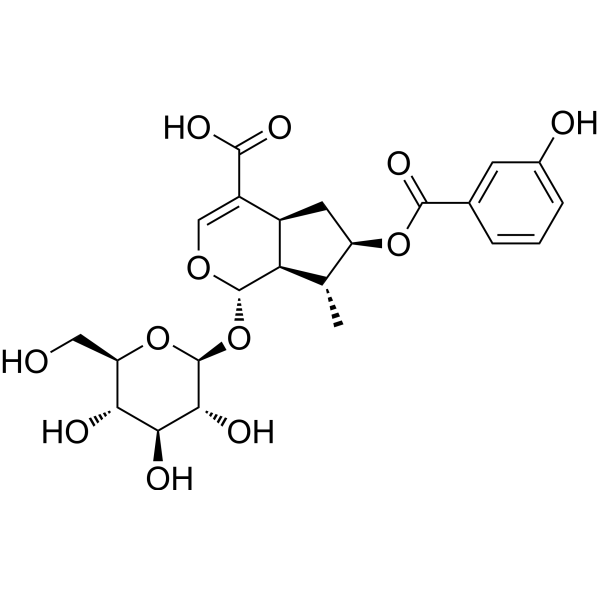
- HY-B0144
-
|
NK-104 hemicalcium; Pitavastatin hemicalcium
|
HMG-CoA Reductase (HMGCR)
Autophagy
Mitophagy
Apoptosis
|
Cardiovascular Disease
Neurological Disease
Metabolic Disease
Cancer
|
|
Pitavastatin Calcium (NK-104 hemicalcium) is a potent hydroxymethylglutaryl-CoA (HMG-CoA) reductase inhibitor. Pitavastatin Calcium (NK-104 hemicalcium) inhibits cholesterol synthesis from acetic acid with an IC50 of 5.8 nM in HepG2 cells. Pitavastatin Calcium is an efficient hepatocyte low-density lipoprotein-cholesterol (LDL-C) receptor inducer. Pitavastatin Calcium also possesses anti-atherosclerotic, anti-asthmatic, anti-osteoarthritis, antineoplastic, neuroprotective, hepatoprotective and reno-protective effects .
|
-

- HY-N2447
-
|
|
AMPK
Apoptosis
|
Metabolic Disease
Cancer
|
|
Amarogentin is a secoiridoid glycoside that is mainly extracted from Swertia and Gentiana roots. Amarogentin exhibits many biological effects, including anti-oxidative, anti-tumour, and anti-diabetic activities. Amarogentin exerts hepatoprotective and immunomodulatory effects. Amarogentin promotes apoptosis, arrests G2/M cell cycle and downregulates of PI3K/Akt/mTOR signalling pathways. Amarogentin exerts beneficial vasculo-metabolic effect by activating AMPK .
|
-
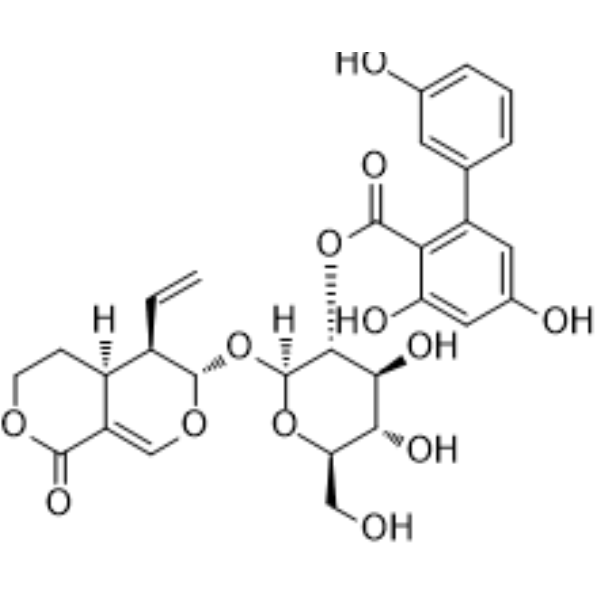
- HY-N6257
-
|
|
ERK
PGE synthase
COX
NF-κB
|
Inflammation/Immunology
Cancer
|
|
Cafestol, one of the major components of coffee, is a coffee-specific diterpene from. Cafestol is a ERK inhibitor for AP-1-targeted activity against PGE2 production and the mRNA expression of cyclooxygenase (COX)-2 in LPS-activated RAW264.7 cells. Cafestol has strong inhibitory activity on PGE2 production by suppressing the NF-kB activation pathway. Cafestol contributes to its beneficial effects through various biological activities such as chemopreventive, antitumorigenic, hepatoprotective, antioxidative and antiinflammatory effects .
|
-
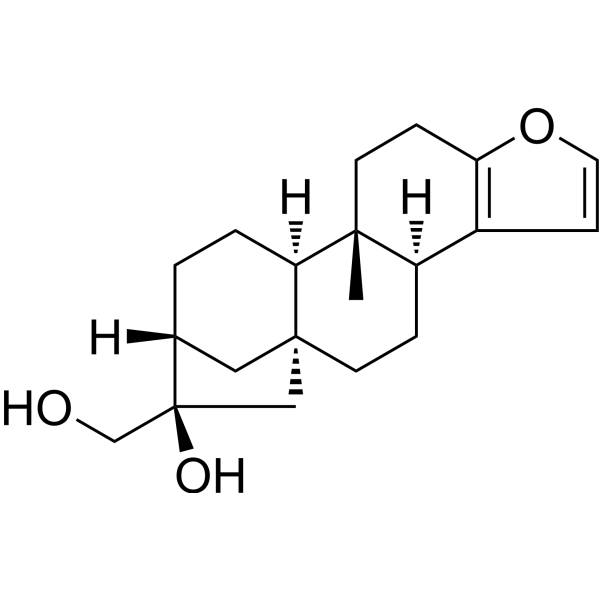
- HY-149262
-
|
|
CDK
DYRK
Autophagy
|
Cancer
|
|
CLK1-IN-3 (compound 10ad) is a potent and selective Clk1 inhibitor, with an IC50 of 5 nM and over 300-fold selectivity for Dyrk1A. CLK1-IN-3 also shows a relatively potent inhibition against Clk2 and Clk4, with IC50 values of 42 and 108 nM, respectively. CLK1-IN-3 potently induces autophagy in vitro. CLK1-IN-3 can be used for acute liver injury (ALI) research .
|
-
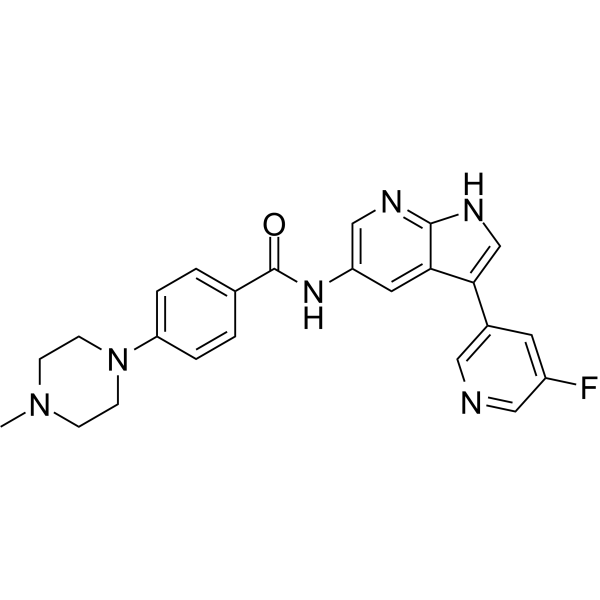
- HY-B1890
-
|
rel-Cianidanol; rel-Catechuic acid
|
COX
|
Infection
Cardiovascular Disease
Neurological Disease
Inflammation/Immunology
Cancer
|
|
(±)-Catechin (rel-Cianidanol) This is a green tea polyester. Catechin possesses anti-cancer activity, which has led to its demise. (±)-Catechin 具有两种forms (+)-Catechin and its reflection body (-)-Catechin. (+)-Catechin inhibitory environment-1 (COX-1) IC50 为 1.4 μM. (-)-Catechin has the effect of promoting hBM-MSC adipose cell differentiation, increasing adipose tissue, and PPARγ horizontal. (±)-Catechin has anti-diabetic, anti-hypertrophic, anti-diabetic, anti-cardiovascular, anti-infective, and liver-protecting effects.
|
-

| Cat. No. |
Product Name |
Category |
Target |
Chemical Structure |
-
- HY-N5092
-
-

-
- HY-N2412
-
-

-
- HY-N11660
-
-

-
- HY-N11448
-
-

-
- HY-N11563
-
-

-
- HY-N0975
-
-

-
- HY-N4107
-
-

-
- HY-115363
-
-

-
- HY-106947
-
-

-
- HY-N10436
-
-

-
- HY-N10434
-
-

-
- HY-N10435
-
-

-
- HY-N10380
-
-

-
- HY-N7543
-
-

-
- HY-N5083
-
-

-
- HY-125129
-
-

-
- HY-N1521
-
-

-
- HY-N12072
-
-

-
- HY-N4113
-
-

-
- HY-139637
-
-

-
- HY-N0779A
-
-

-
- HY-N4043
-
-

-
- HY-114360
-
-

-
- HY-N4037
-
-

-
- HY-N0691
-
-

-
- HY-N1506
-
-

-
- HY-N1324
-
-

-
- HY-N0057
-
|
3,4-Di-O-caffeoylquinic acid; Isochlorogenic acid B
|
Infection
Caprifoliaceae
Classification of Application Fields
Ketones, Aldehydes, Acids
Source classification
Phenols
Polyphenols
Plants
Endogenous metabolite
Disease Research Fields
|
Glucosidase
Influenza Virus
Apoptosis
Endogenous Metabolite
|
|
3,4-Dicaffeoylquinic acid (3,4-Di-O-caffeoylquinic acid), naturally isolated from Laggera alata, has antioxidative, DNA protective, neuroprotective and hepatoprotective properties. 3,4-Dicaffeoylquinic acid exerts apoptosis-mediated cytotoxicity and α-glucosidase inhibitory effects. 3,4-Dicaffeoylquinic acid possesses a unique mechanism of anti-influenza viral activity, that is, enhancing viral clearance by increasing TRAIL .
|
-

-
- HY-N0055
-
|
3-O-Caffeoylquinic acid; Heriguard; NSC-407296
|
Structural Classification
Caprifoliaceae
Classification of Application Fields
Anti-aging
Lonicera japonica Thunb.
Source classification
Plants
Endogenous metabolite
Infection
Human Gut Microbiota Metabolites
Microorganisms
Simple Phenylpropanols
Phenols
Polyphenols
Phenylpropanoids
Inflammation/Immunology
Disease Research Fields
Cancer
|
HIF/HIF Prolyl-Hydroxylase
Reactive Oxygen Species
Bacterial
Influenza Virus
Endogenous Metabolite
|
|
Chlorogenic acid is a major phenolic compound in Lonicera japonica Thunb. It is an orally active antioxidant activity, antibacterial, hepatoprotective, cardioprotective, anti-inflammatory, antipyretic, neuroprotective, anti-obesity, antiviral, anti-microbial, anti-hypertension compound .
|
-

-
- HY-N7056
-
-

-
- HY-N0148A
-
-

-
- HY-N0711
-
|
Cymophenol
|
Structural Classification
Monophenols
Preservatives
Classification of Application Fields
Labiatae
Phenols
Plants
Inflammation/Immunology
Disease Research Fields
Food Research
|
Notch
Apoptosis
Fungal
Endogenous Metabolite
Bacterial
|
|
Carvacrol is an orally active monoterpenic phenol that can be extract from an abundant number of aromatic plants, including thyme and oregano, possessing antioxidant, antibacterial, antifungal, anticancer, anti-inflammatory, hepatoprotective, spasmolytic, and vasorelaxant properties. Carvacrol also causes cell cycle arrest in G0/G1, downregulates Notch-1, and Jagged-1, and induces apoptosis. Carvacrol is used in low concentrations as a food flavoring ingredient and preservative, as well as a fragrance ingredient in cosmetic formulations .
|
-

-
- HY-N0416
-
-

-
- HY-N0148
-
-

-
- HY-126052
-
-

-
- HY-N0664
-
|
|
Infection
Structural Classification
Eucommia ulmoides Oliver
Iridoids
Neurological Disease
Classification of Application Fields
Terpenoids
Source classification
Eucommiaceae
Plants
Inflammation/Immunology
Disease Research Fields
|
Bacterial
|
|
Aucubin, an iridoid glucoside, is isolated from Plantago asiatica, Eucommia ulmoides, the leaves of Aucuba japonica and more recently from butterfly larva. Aucubin has many biological activities, such as antioxidant, anti-aging, anti-inflammatory, antimicrobial, anti-fibrotic, anti-cancer, hepatoprotective, neuroprotective and osteoprotective effects .
|
-

-
- HY-N0368
-
-

-
- HY-N12442
-
-

-
- HY-N7919
-
-

-
- HY-115394
-
-

-
- HY-N0806
-
-

-
- HY-N9880
-
-

-
- HY-N7680
-
-

-
- HY-N10359
-
-

-
- HY-N7680A
-
-

-
- HY-N1616
-
-

-
- HY-150521
-
-

-
- HY-N0344
-
-

-
- HY-N12432
-
-

-
- HY-N12426
-
-

- HY-N12711
-
-

- HY-N0017
-
-

- HY-Y0073
-
-

- HY-N12121
-
-

- HY-N4243
-
-

- HY-N2998
-
-

- HY-118383
-
-

- HY-N12706
-
-

- HY-N3646
-
-

- HY-N2094
-
-

- HY-N1508
-
-

- HY-N0269
-
-

- HY-N9966
-
-

- HY-N0823
-
-

- HY-N9096
-
-

- HY-N0526
-
-

- HY-N0222
-
-

- HY-N2831
-
-

- HY-N7026
-
-

- HY-N3240
-
-

- HY-N0692
-
-

- HY-125911
-
-

- HY-W068771
-
-

- HY-N10755A
-
-

- HY-N0108
-
-

- HY-N0222R
-
-

- HY-N0462
-
-

- HY-N0407
-
-

- HY-D0803
-
|
|
Quinones
Structural Classification
Classification of Application Fields
Nigella sativa L.
Ranunculaceae
Benzene Quinones
Plants
Inflammation/Immunology
Disease Research Fields
|
Apoptosis
VEGFR
PI3K
Akt
|
|
Thymoquinone is an orally active natural product isolated from N. sativa Thymoquinone down-regulates the VEGFR2-PI3K-Akt pathway. Thymoquinone has antioxidant, anti-inflammatory, anticancer, antiviral, anticonvulsant, antifungal, antiviral, antiangiogenic activity and hepatoprotective effects. Thymoquinone can be used to study Alzheimer's disease, cancer, cardiovascular disease, infectious disease and inflammation .
|
-

- HY-N11457
-
-

- HY-N2447
-
-

- HY-N6257
-
-

- HY-B1890
-
-

| Cat. No. |
Product Name |
Chemical Structure |
-
- HY-N1214S
-
|
|
|
Squalene-d6 is a deuterium labeled Squalene. Squalene (Super Squalene) is an intermediate product in the synthesis of cholesterol, and shows several pharmacological properties such as hypolipidemic, hepatoprotective, antiatherosclerotic, cardioprotective, antioxidant, and antitumour activity .
|
-

-
- HY-N0108S
-
|
|
|
Physcion-d3 (Parietin-d3) is the deuterium labeled Physcion (HY-N0108). Physcion acts as an inhibitor of 6-phosphogluconate dehydrogenase, with an IC50 and a Kd of 38.5 μM and 26.0 μM, respectively. Physcion exhibits laxative, hepatoprotective, anti-inflammatory, anti-microbial, anti-proliferative and anti-tumor effects .
|
-

-
- HY-W032013S3
-
|
|
|
1-Octanol-d5 is deuterated labeled Carvacrol (HY-N0711). Carvacrol is an orally active monoterpenic phenol that can be extract from an abundant number of aromatic plants, including thyme and oregano, possessing antioxidant, antibacterial, antifungal, anticancer, anti-inflammatory, hepatoprotective, spasmolytic, and vasorelaxant properties. Carvacrol also causes cell cycle arrest in G0/G1, downregulates Notch-1, and Jagged-1, and induces apoptosis. Carvacrol is used in low concentrations as a food flavoring ingredient and preservative, as well as a fragrance ingredient in cosmetic formulations .
|
-

-
- HY-W010201S
-
|
|
|
Citronellol-d6 is deuterated labeled Linalool (HY-N0368). Linalool is a natural monoterpene which is a competitive NMDA receptor antagonist. Linalool is orally active and crosses the blood-brain barrier. Linalool has anticancer, antibacterial, anti-inflammatory, neuroprotective, anxiolytic, antidepressant, anti-stress, cardioprotective, hepatoprotective, nephroprotective and pulmonary protective activities .
|
-

-
- HY-W010410S
-
|
|
|
Oct-1-en-3-ol-d3 is deuterated labeled Linalool (HY-N0368). Linalool is a natural monoterpene which is a competitive NMDA receptor antagonist. Linalool is orally active and crosses the blood-brain barrier. Linalool has anticancer, antibacterial, anti-inflammatory, neuroprotective, anxiolytic, antidepressant, anti-stress, cardioprotective, hepatoprotective, nephroprotective and pulmonary protective activities .
|
-

-
- HY-N0055S
-
|
|
|
Chlorogenic acid- 13C3 (Heriguard- 13C3; NSC-407296- 13C3) is 13C- and 15N-labeled Chlorogenic acid (HY-N0055). Chlorogenic acid is a major phenolic compound in Lonicera japonica Thunb.. It plays several important and therapeutic roles such as antioxidant activity, antibacterial, hepatoprotective, cardioprotective, anti-inflammatory, antipyretic, neuroprotective, anti-obesity, antiviral, anti-microbial, anti-hypertension .
|
-

Your information is safe with us. * Required Fields.
Inquiry Information
- Product Name:
- Cat. No.:
- Quantity:
- MCE Japan Authorized Agent:

























































































































